A farmhouse garden blends rustic charm with practical beauty, creating an outdoor space that feels both productive and welcoming. This style emphasizes natural materials, informal layouts, and a connection to the land, evoking a sense of timeless simplicity. It’s about more than just growing plants; it’s about crafting a serene escape that is functional, beautiful, and full of personal character. By incorporating weathered textures, classic structures, and a mix of flowers and edibles, you can transform your yard into a quaint and inviting retreat. These ideas will help you cultivate a charming outdoor space that captures the heart of country living.
1. A Farmhouse Garden with a White Picket Fence
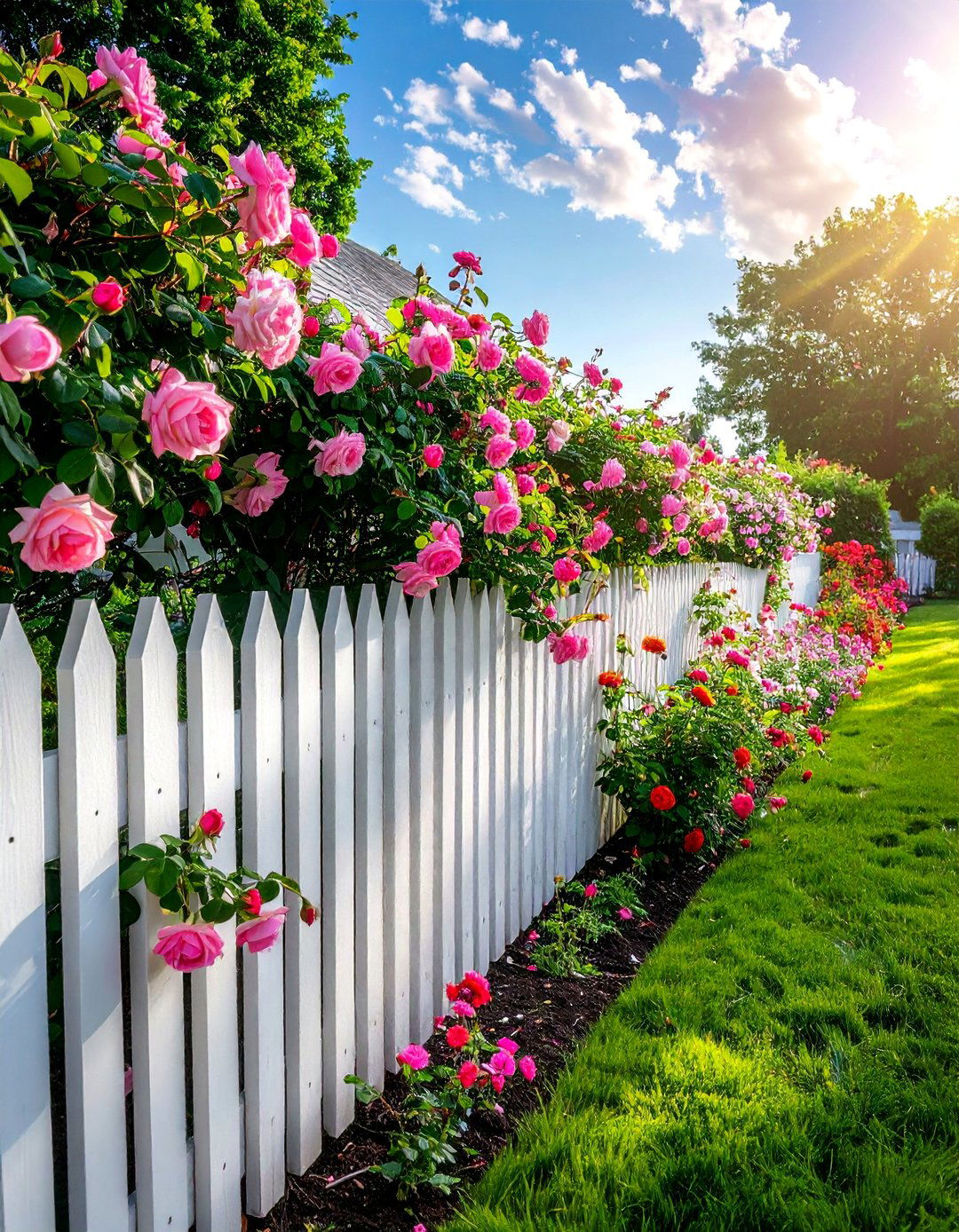
A classic white picket fence is the quintessential element for any farmhouse garden, instantly defining the space with timeless charm. This simple boundary does more than just mark the edge of your property; it creates a picturesque frame for your flowers and vegetables. The clean, crisp lines of the white pickets contrast beautifully with the vibrant greens of foliage and the bright colors of blossoms. For an authentic look, allow climbing roses or sweet peas to weave through the slats, softening the structure and adding a layer of romantic appeal. This addition not only enhances curb appeal but also establishes a welcoming, nostalgic atmosphere.
2. Incorporating Raised Wooden Planter Beds
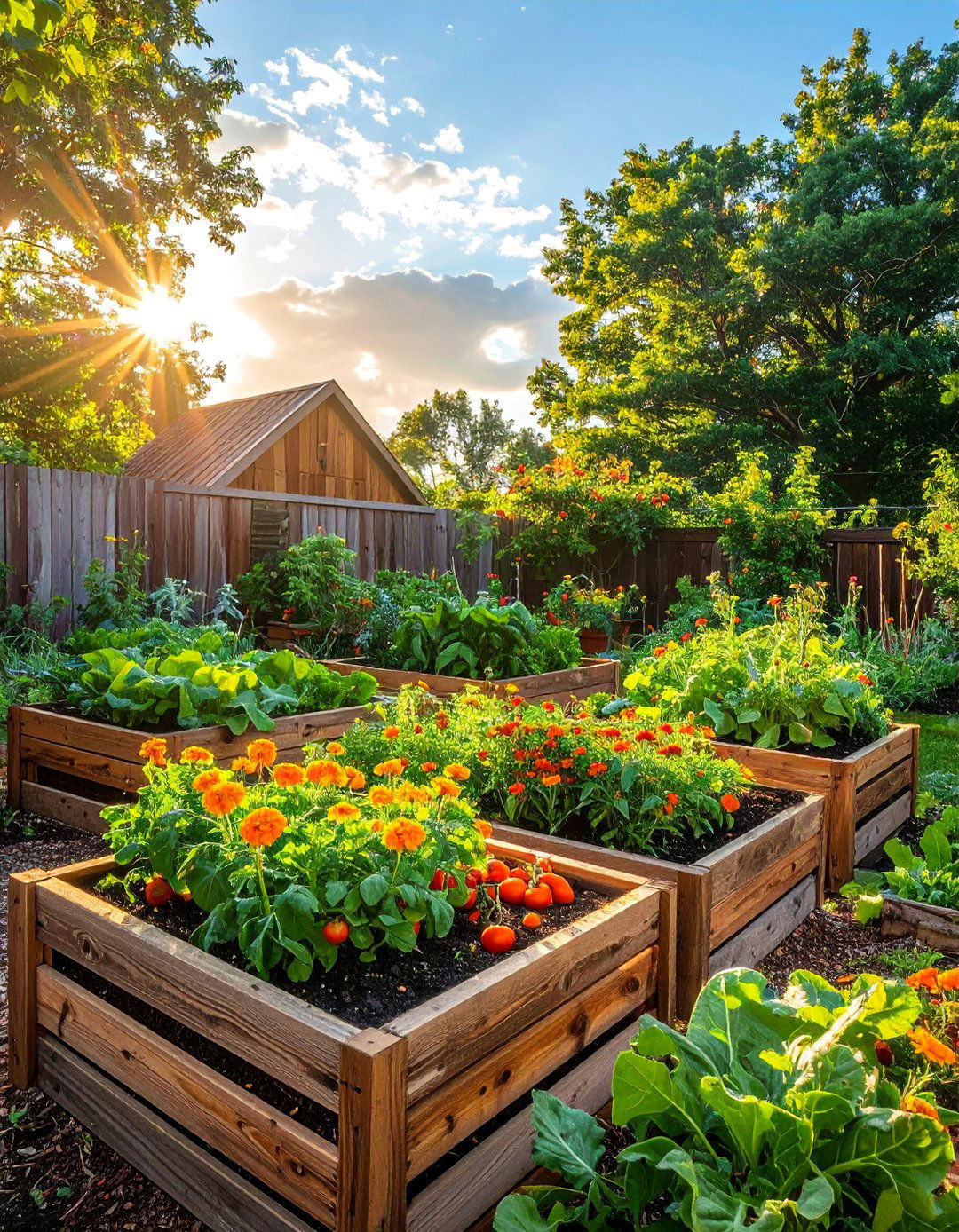
Raised wooden planter beds are a cornerstone of farmhouse garden design, offering both functionality and rustic aesthetic appeal. Using materials like reclaimed barn wood or natural cedar enhances the country feel while providing a durable structure for your plants. These beds make gardening more accessible by reducing the need for bending and kneeling, and they offer superior drainage and soil control. Arrange them in a neat, geometric layout to grow a mix of vegetables, herbs, and cutting flowers side-by-side. This organized yet natural approach embodies the practical, productive spirit of a traditional farmhouse garden, keeping everything within easy reach for tending and harvesting.
3. Designing Pea Gravel Garden Pathways
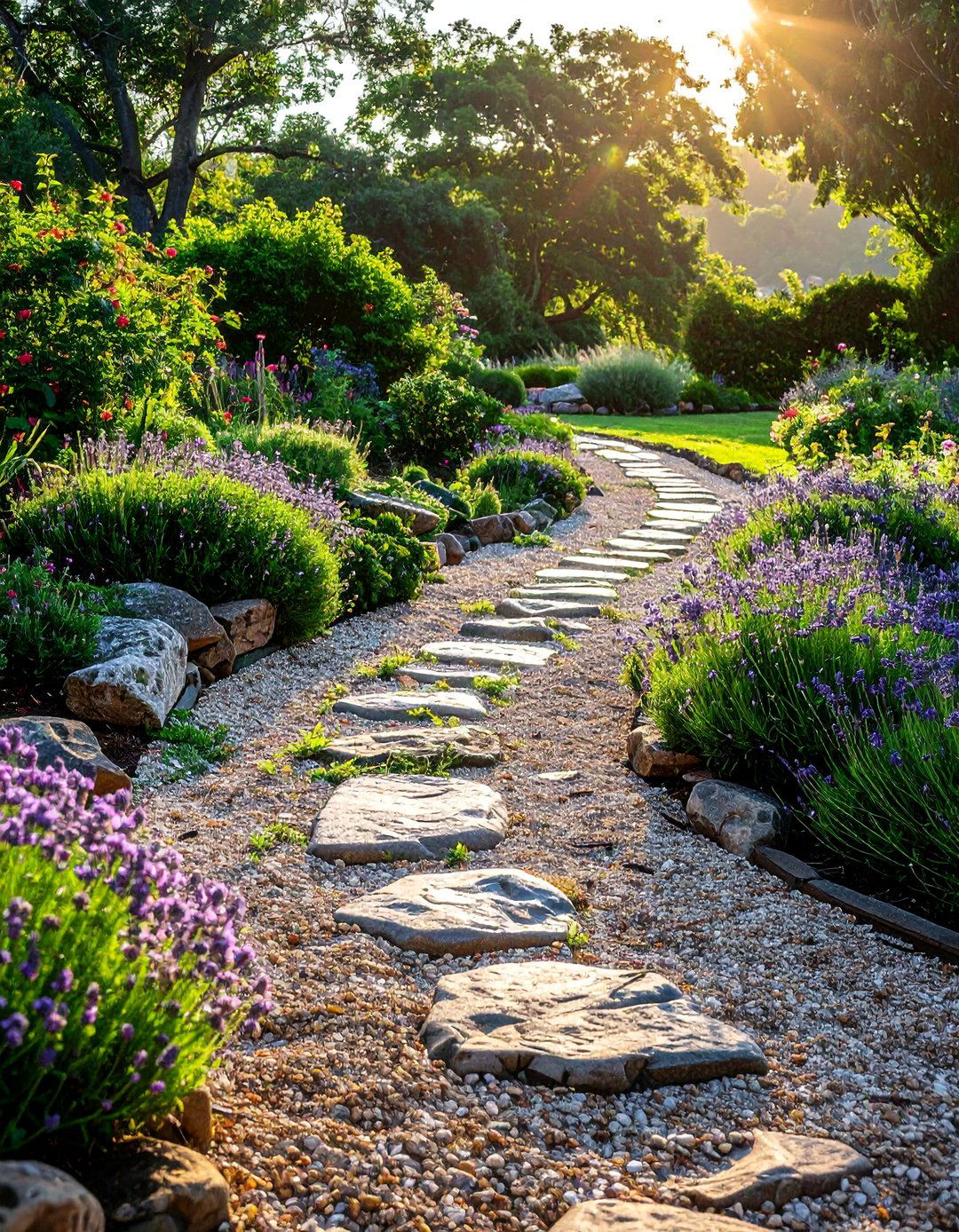
For a truly authentic farmhouse feel, consider designing pathways with pea gravel. These informal walkways add a delightful crunch underfoot and create a soft, rustic transition between different garden areas. Unlike harsh concrete, gravel paths blend seamlessly with the natural surroundings, complementing the textures of stone, wood, and foliage. They are relatively inexpensive and easy to install, requiring just a stable base and landscape fabric to prevent weeds. Edging the paths with bricks, stones, or low-growing herbs like thyme helps keep the gravel contained while adding another layer of visual interest, perfectly capturing the relaxed and charming country aesthetic.
4. Using Galvanized Metal Stock Tanks as Planters
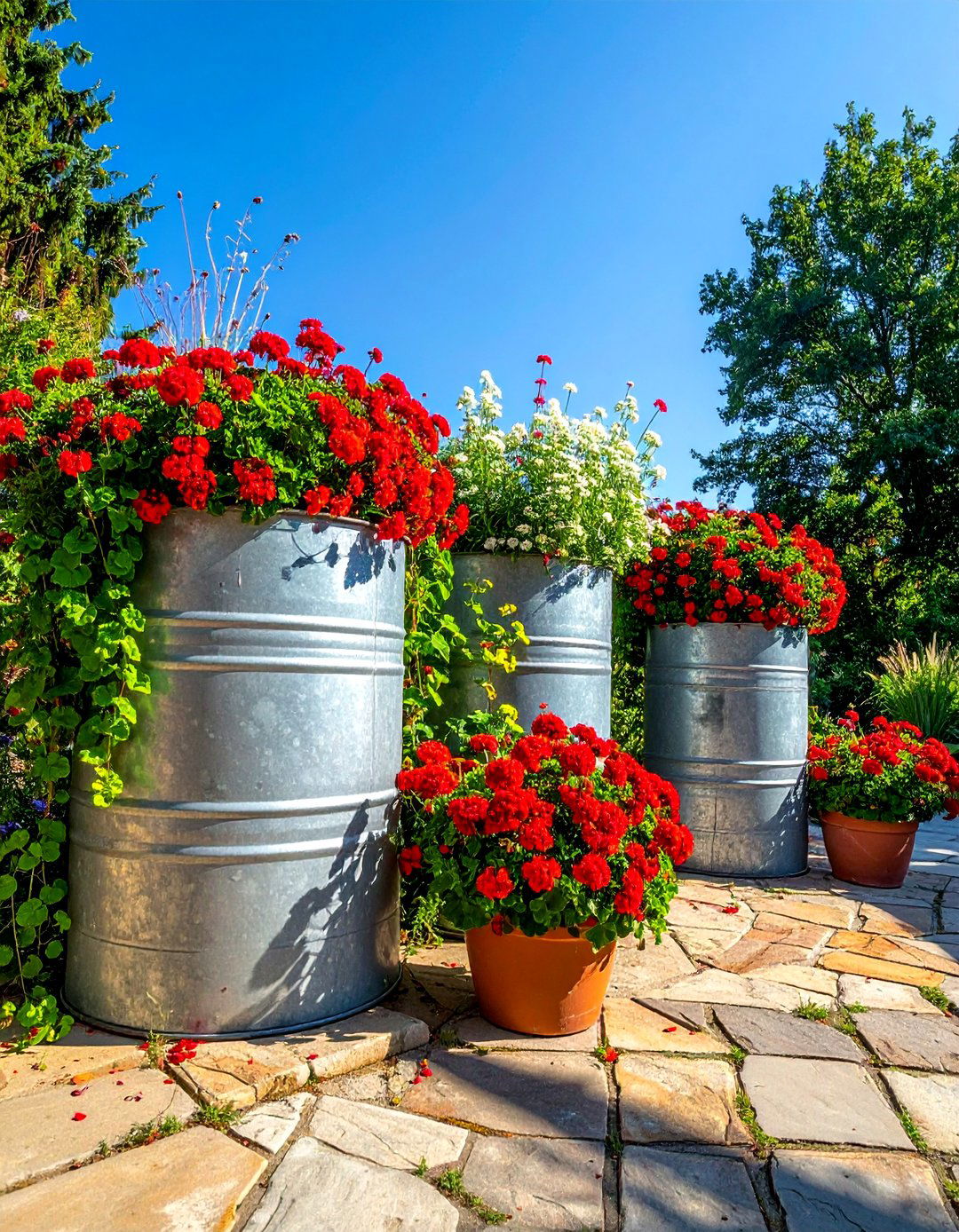
Galvanized metal stock tanks offer a unique and durable alternative to traditional planters in a farmhouse garden. Originally used for watering livestock, these containers bring an authentic agricultural element to your outdoor space. Their large size makes them ideal for creating a mini vegetable patch, a vibrant flower display, or even a small herb garden. The shiny, corrugated metal surface contrasts beautifully with the soft textures of plants and weathered wood. To use them, simply drill drainage holes in the bottom and fill with quality potting soil. This creative reuse of farm equipment is both practical and stylishly rustic.
5. Planting a Cutting Flower Garden Bed
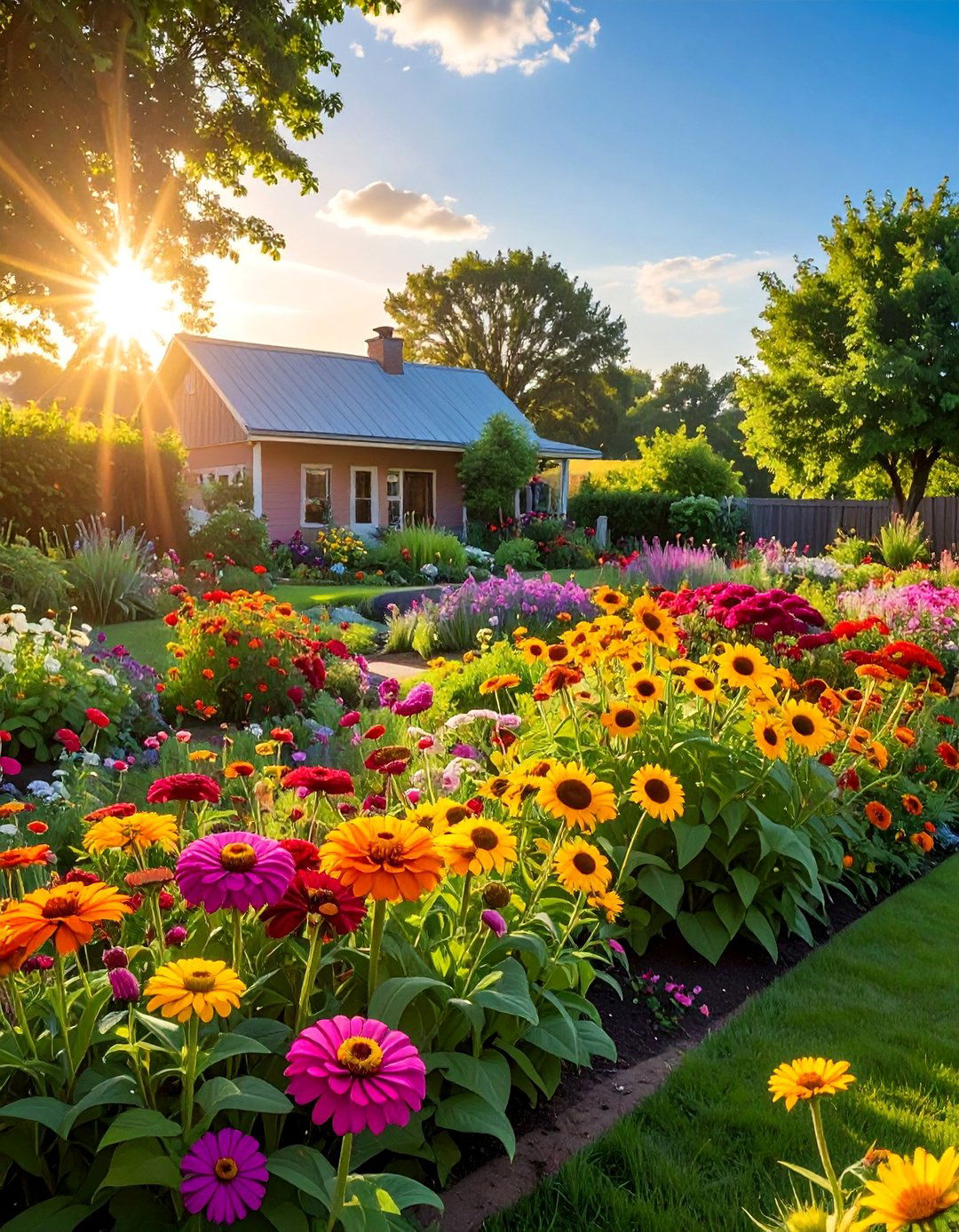
A cutting flower garden bed is a delightful feature that provides an endless supply of fresh bouquets for your home. In the true farmhouse spirit, this garden is both beautiful and productive. Dedicate a sunny plot to growing varieties known for their long stems and lasting beauty, such as zinnias, cosmos, dahlias, and sunflowers. Planting in informal drifts rather than rigid rows enhances the relaxed, cottage-style feel. This space not only adds vibrant color and life to your yard but also allows you to bring the beauty of your garden indoors, connecting your home and landscape in a meaningful, charming way.
6. A Farmhouse Garden with a Rustic Potting Bench
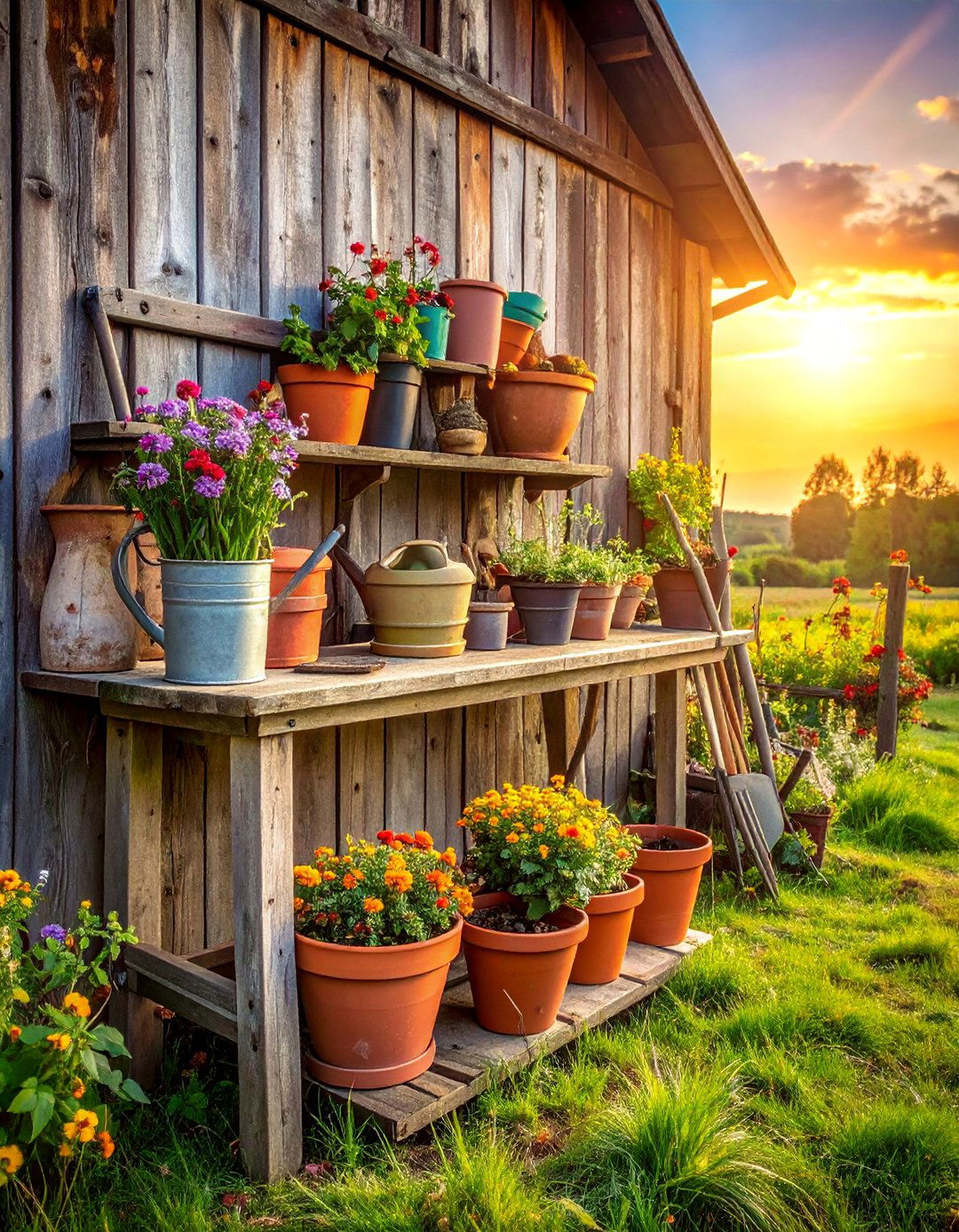
A rustic potting bench serves as a functional workspace and a charming focal point in a farmhouse garden. Crafted from weathered wood or reclaimed materials, it provides a dedicated spot for potting plants, storing tools, and organizing seeds. Look for a bench with a spacious work surface, shelves for supplies, and hooks for hanging hand tools. Decorate it with terracotta pots, vintage watering cans, and small garden trinkets to enhance its visual appeal. This practical station not only keeps your gardening tasks organized but also adds a layer of lived-in character, making your garden feel like a well-loved and actively used space.
7. Adding a Traditional Wooden Arbor Entrance
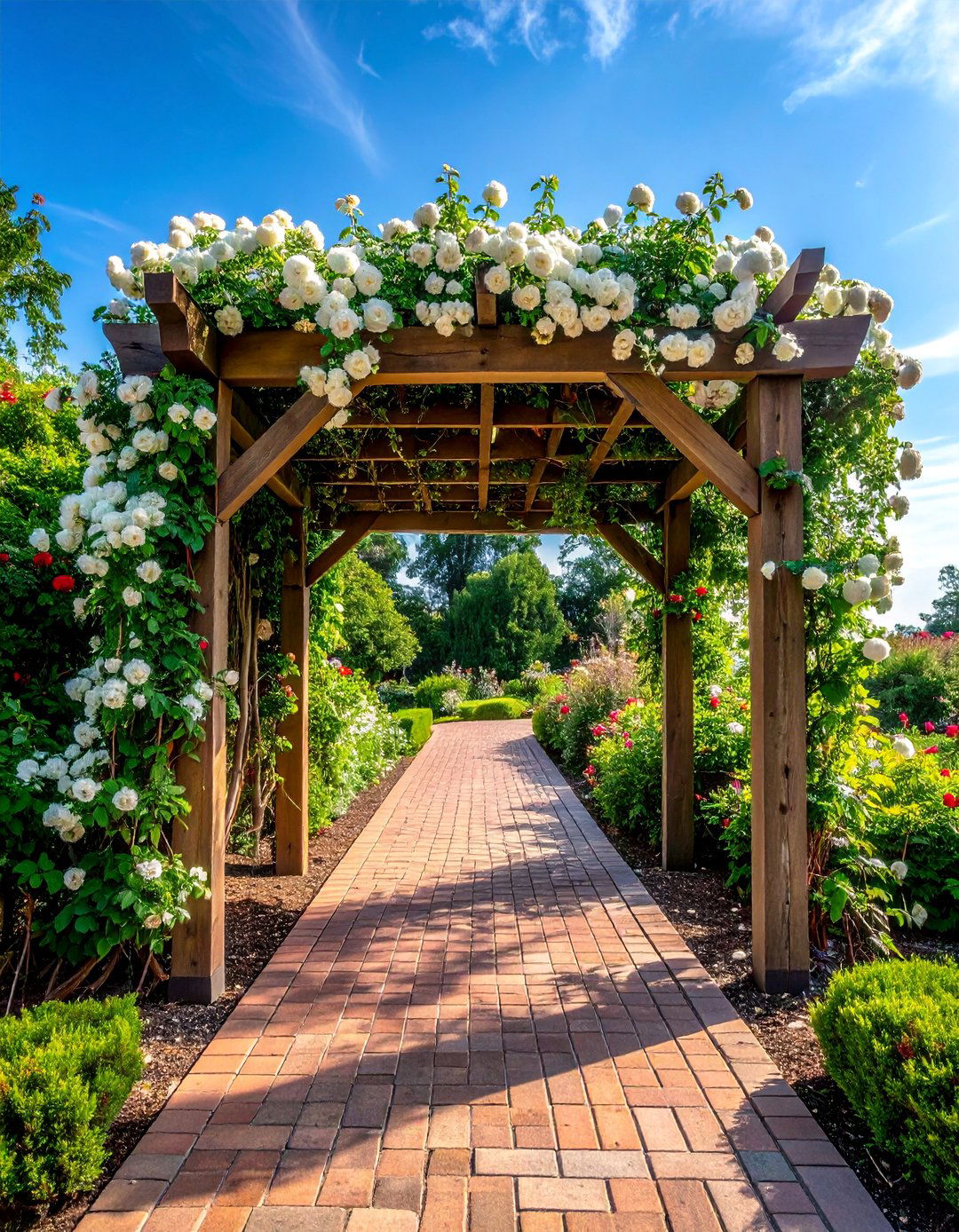
A traditional wooden arbor creates a wonderfully inviting entrance to your farmhouse garden. This simple structure acts as a gateway, beckoning visitors to step into a world of natural beauty. Whether placed at the beginning of a path or over a gate in your picket fence, an arbor adds vertical interest and a sense of enclosure. Train climbing roses, wisteria, or clematis to grow over the frame, softening its lines with lush foliage and fragrant blooms. Over time, the wood will weather to a beautiful silvery-gray, further enhancing the garden's rustic and timeless charm while creating a memorable and romantic threshold.
8. Creating a Wildflower Meadow Section
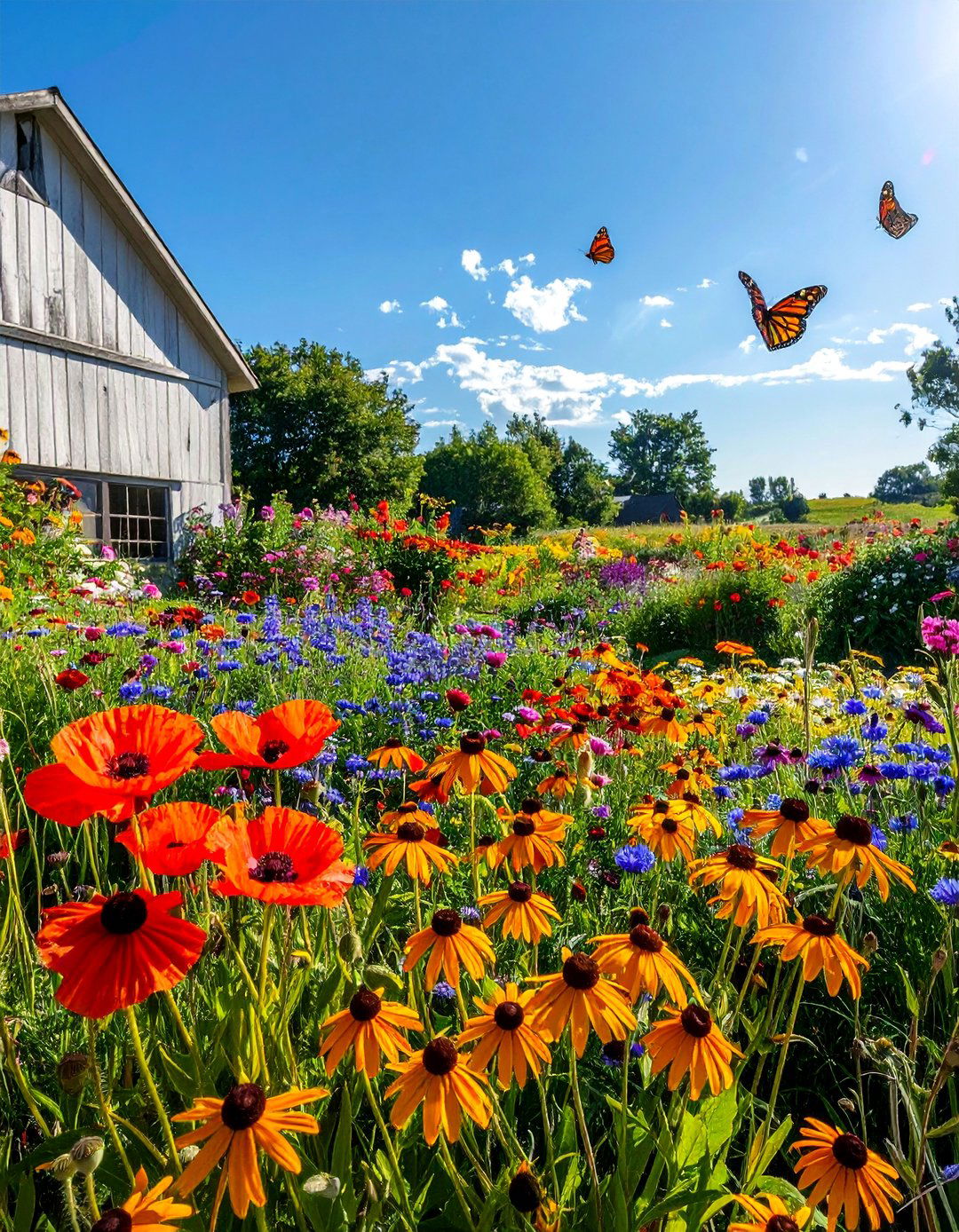
Devoting a section of your yard to a wildflower meadow captures the untamed, natural beauty inherent in the farmhouse style. This low-maintenance approach to gardening celebrates native plants and supports local pollinators like bees and butterflies. Simply prepare a sunny area and sow a mix of regional wildflower seeds, such as coneflowers, black-eyed Susans, and poppies. The result is a vibrant, ever-changing tapestry of color and texture that requires minimal watering or fuss once established. A wildflower meadow provides a stunning visual display and fosters a healthy ecosystem, perfectly aligning with the back-to-nature spirit of a farmhouse garden.
9. Displaying Vintage Garden Tools as Decor
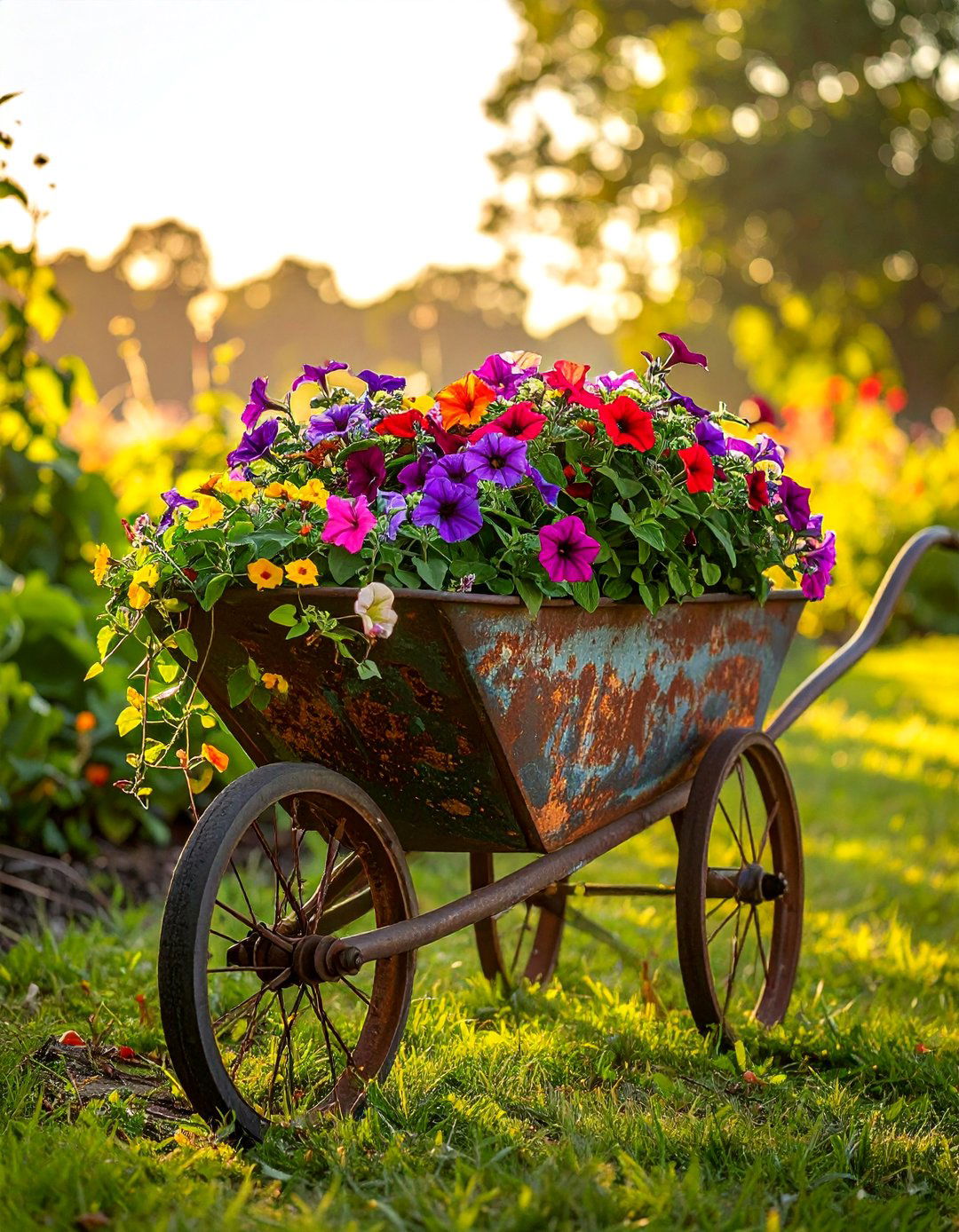
Displaying vintage garden tools as decor is a creative way to infuse your farmhouse garden with history and personality. An old, rust-patinaed shovel, a weathered wooden wheelbarrow, or a collection of antique hand trowels can be repurposed into unique decorative elements. Mount them on a shed wall, lean them against a fence, or incorporate them into a planter arrangement. A vintage wheelbarrow, for instance, makes an excellent mobile flower planter, overflowing with colorful annuals. These found objects tell a story and celebrate the heritage of gardening, adding an authentic, rustic touch that new items simply cannot replicate.
10. Building a Stone or Brick Edging for Beds
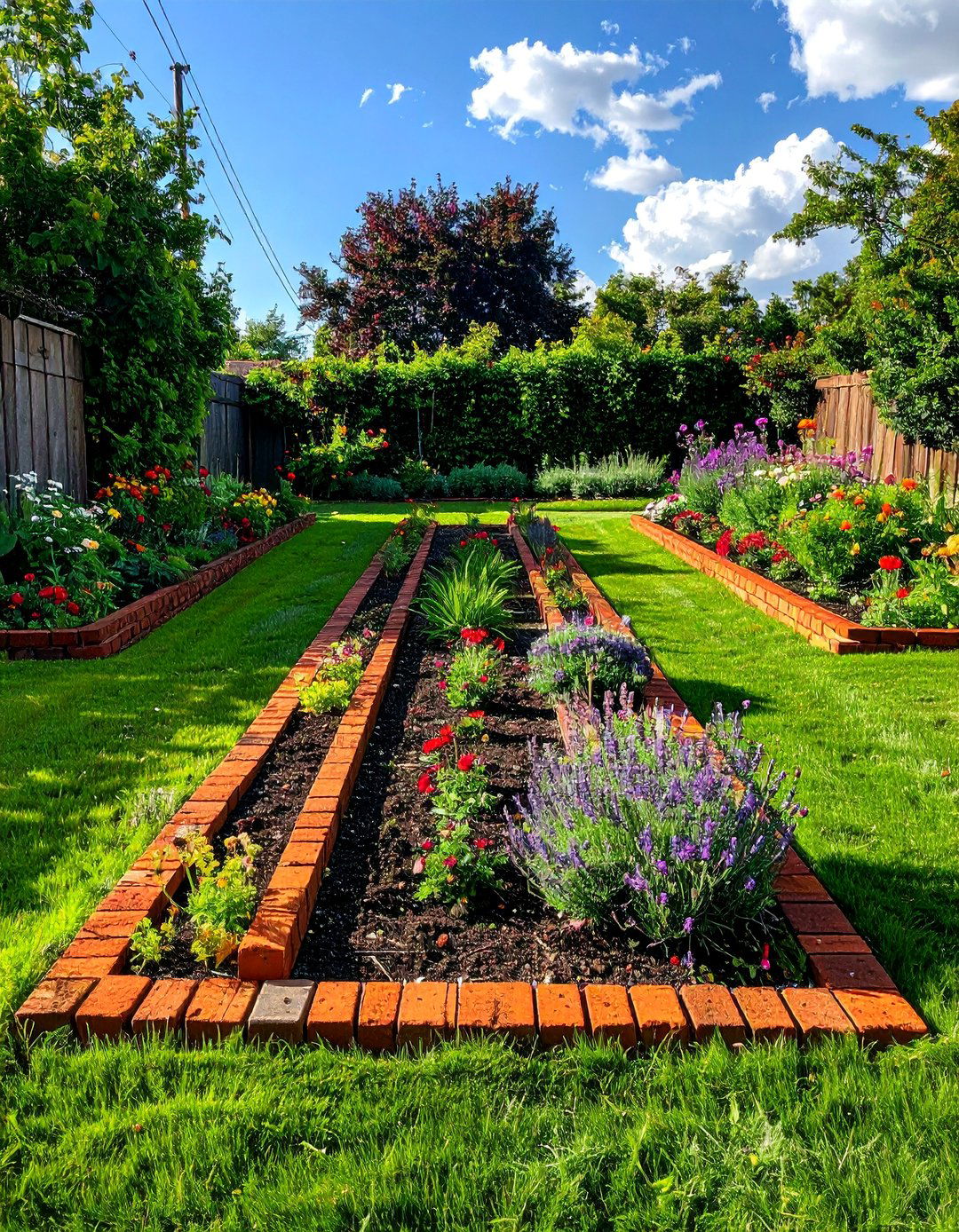
Using natural stone or reclaimed brick for garden bed edging adds structure and rustic elegance to your farmhouse landscape. This technique creates a clean, defined line between your planting areas and pathways or lawn, which helps prevent soil erosion and keeps weeds at bay. The weathered texture and earthy tones of old bricks or fieldstones complement the informal planting style of a farmhouse garden perfectly. You can lay them in a simple, straight line for a neat look or create gentle curves for a more organic feel. This durable and timeless edging material enhances the garden's overall charm and organization.
11. Installing a Classic Farmhouse Garden Gate
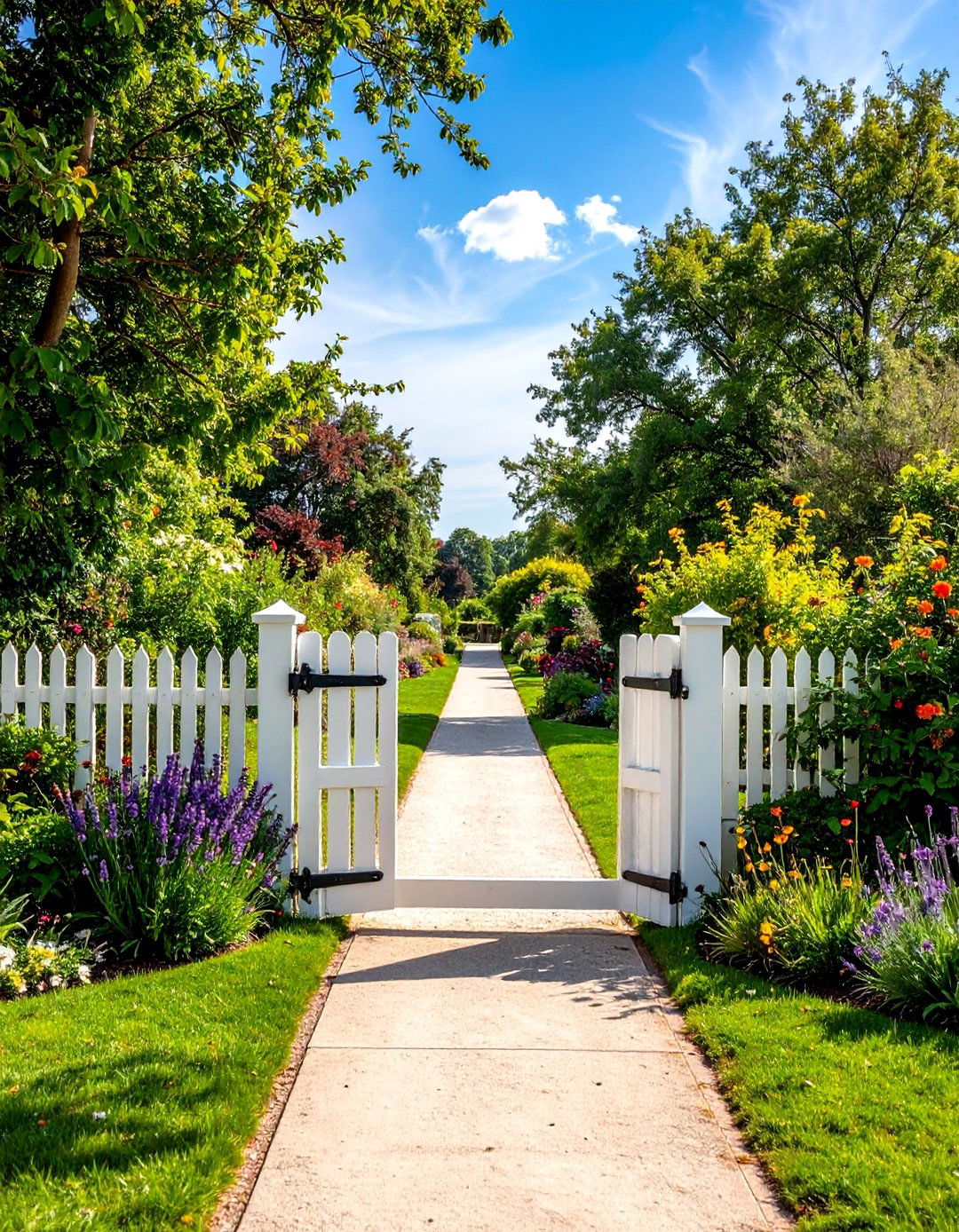
A classic farmhouse garden gate is more than just a functional entry point; it’s a statement piece that sets the tone for the entire space. Choose a simple, sturdy design made from wood or wrought iron to complement your fencing and overall aesthetic. A wooden gate can be painted white to match a picket fence or left to weather naturally for a more rustic appearance. Adding traditional hardware, like a simple latch or strap hinges, completes the look. This charming feature provides a sense of welcome and hints at the beautiful, lovingly tended garden that lies just beyond it.
12. Growing Heirloom Vegetables and Herbs
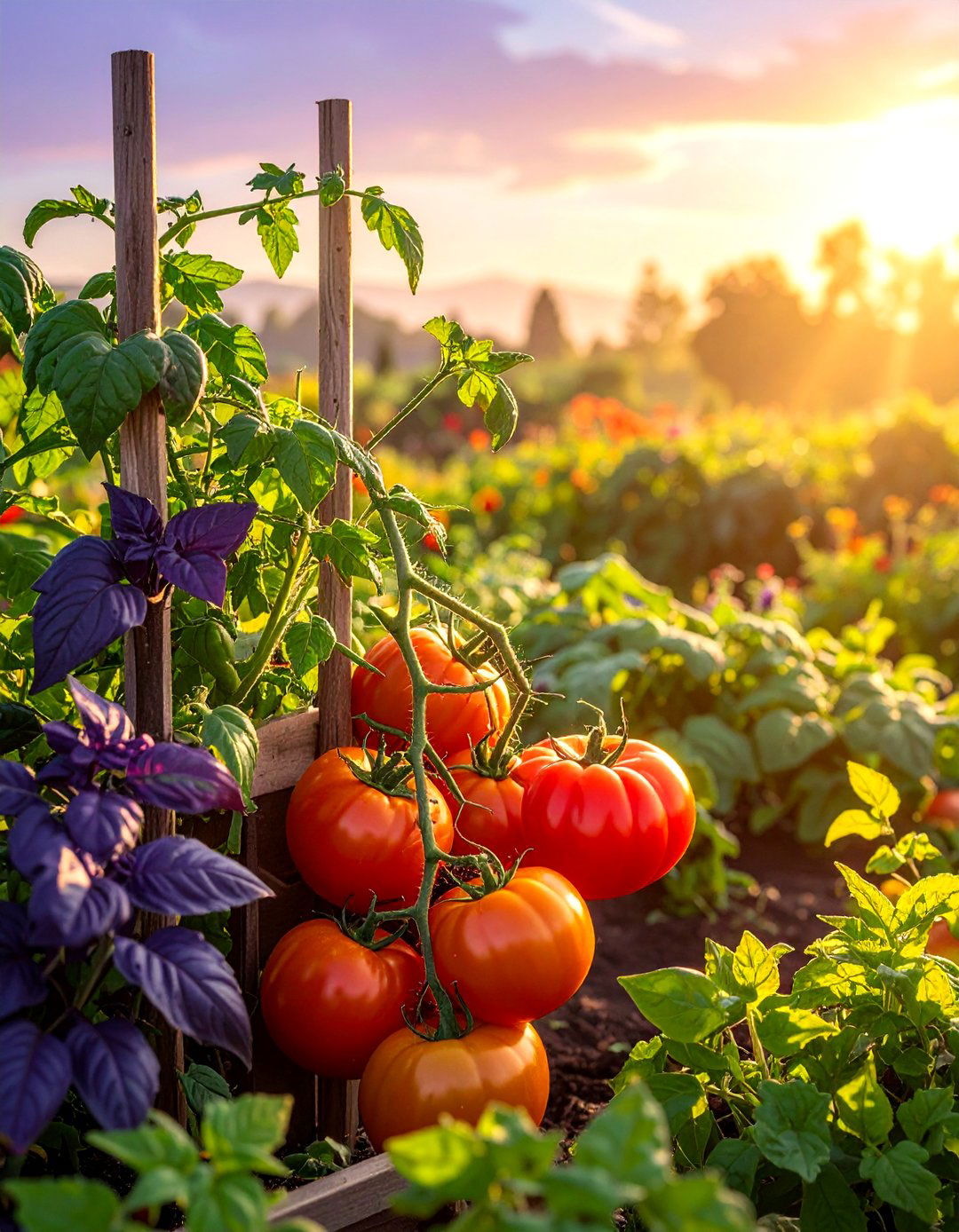
Growing heirloom vegetables and herbs connects your garden directly to agricultural traditions, a core principle of the farmhouse ethos. Heirlooms are open-pollinated varieties that have been passed down through generations, often prized for their unique flavors, colors, and histories. Planting varieties like Brandywine tomatoes, Lemon cucumbers, or Purple Basil adds diversity and interest to your garden plots. Interspersing herbs like rosemary, lavender, and thyme among your vegetables not only aids in pest control but also ensures a fresh supply for your kitchen. This practice celebrates sustainability and self-sufficiency, turning your garden into a source of delicious, homegrown produce.
13. Incorporating a Simple Wooden Bench
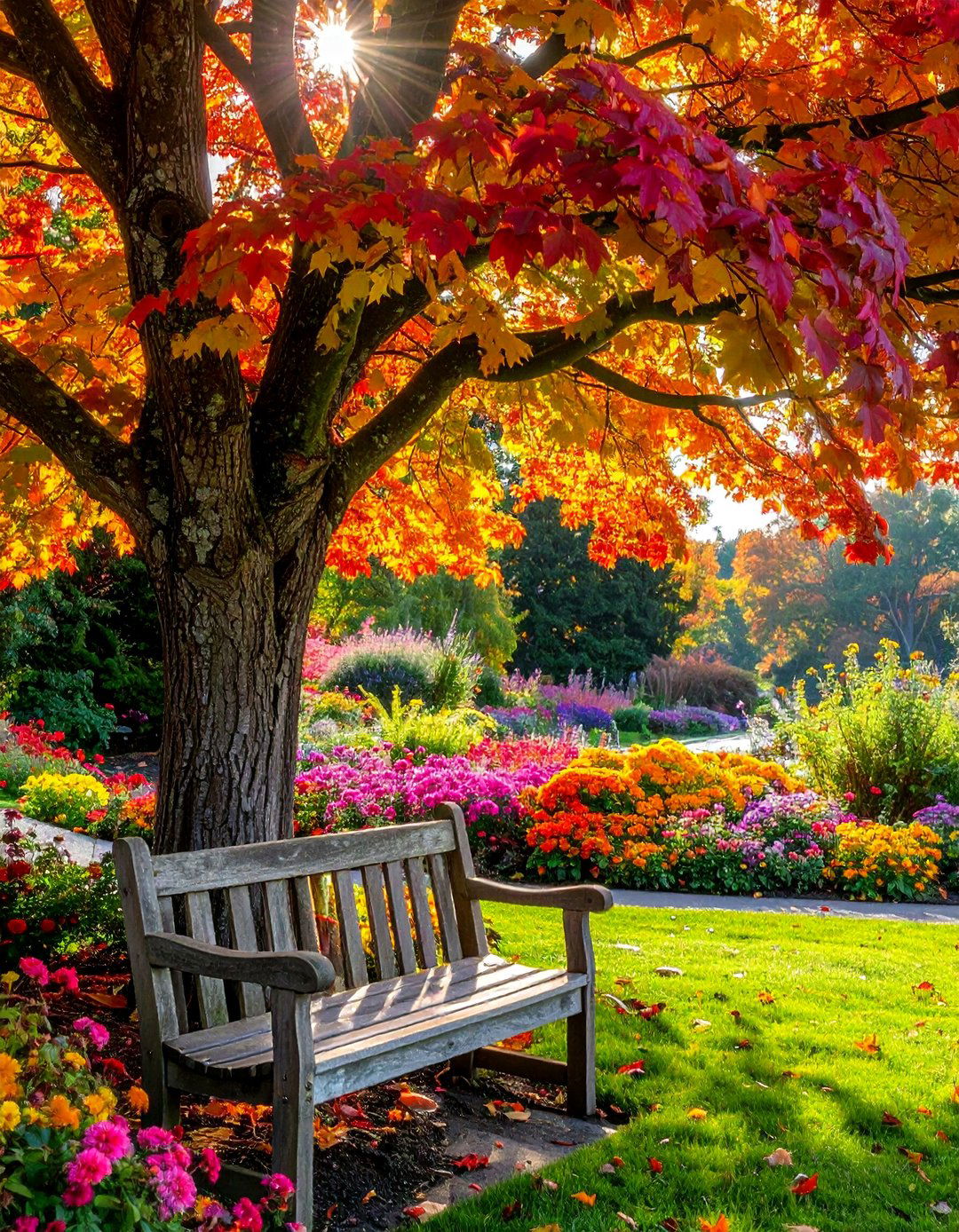
A simple wooden bench, nestled amongst the flowers or under a shade tree, provides a perfect spot for rest and contemplation in your farmhouse garden. Choose a bench with a classic design, made from a durable wood like teak or cedar that will age gracefully over time. Its presence invites you to pause and enjoy the sights, sounds, and scents of your garden. A weathered, slightly imperfect bench adds more character than a pristine new one, contributing to the lived-in, comfortable feel of the space. It’s a functional piece that enhances the garden's peaceful and restorative atmosphere.
14. Setting Up a Clothesline for a Functional Touch
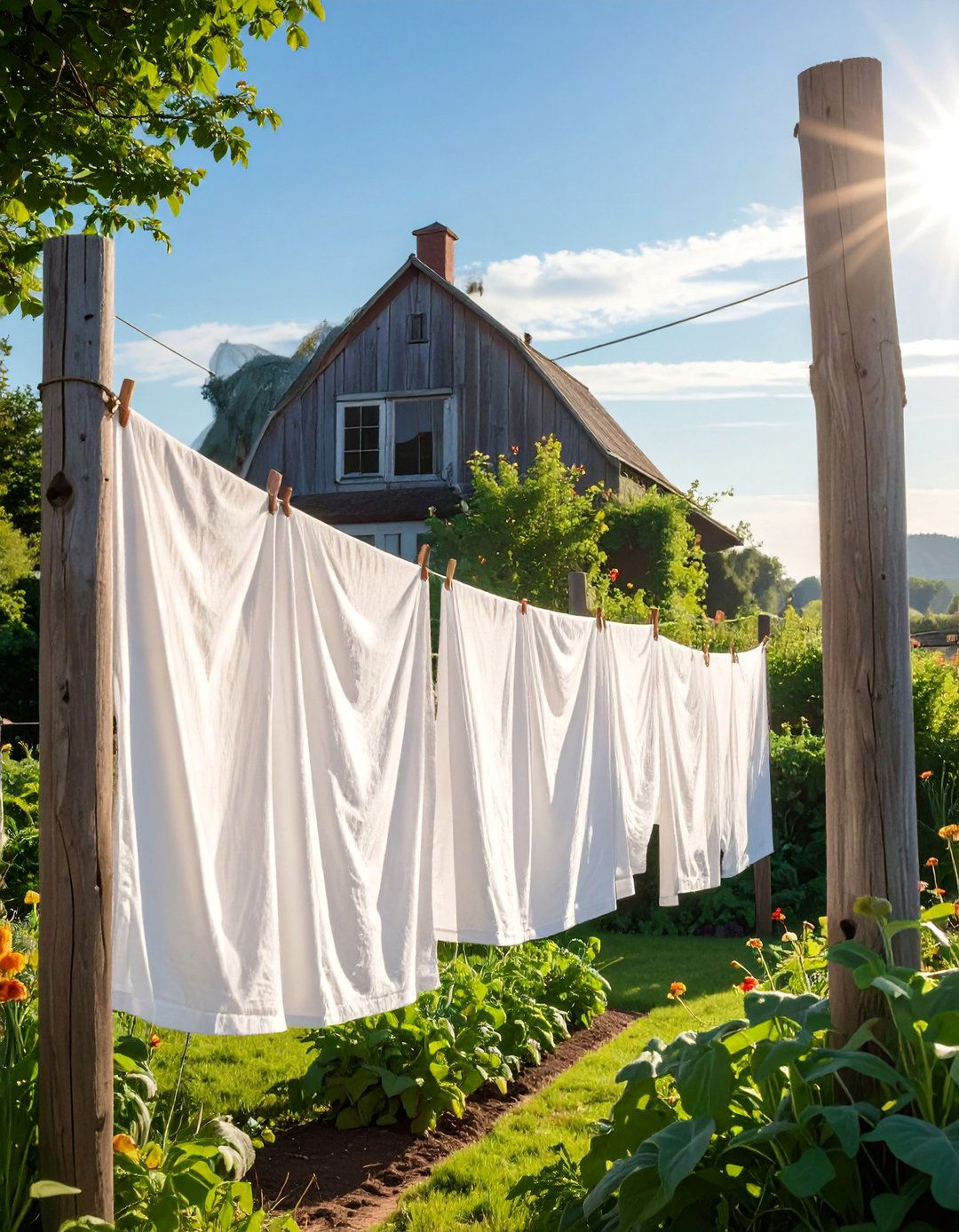
A clothesline adds a touch of practical nostalgia and movement to a farmhouse garden. The sight of laundry gently billowing in the breeze evokes a simpler time and reinforces the productive, working nature of a country home. Positioned at the edge of the garden, a classic T-post clothesline is both functional and aesthetically pleasing. It’s an environmentally friendly way to dry laundry while adding a dynamic, visual element to the landscape. This simple feature blends seamlessly with the overall theme, connecting the daily rhythms of home life with the beauty of the outdoors in a truly authentic way.
15. Using Terracotta and Aged Clay Pots
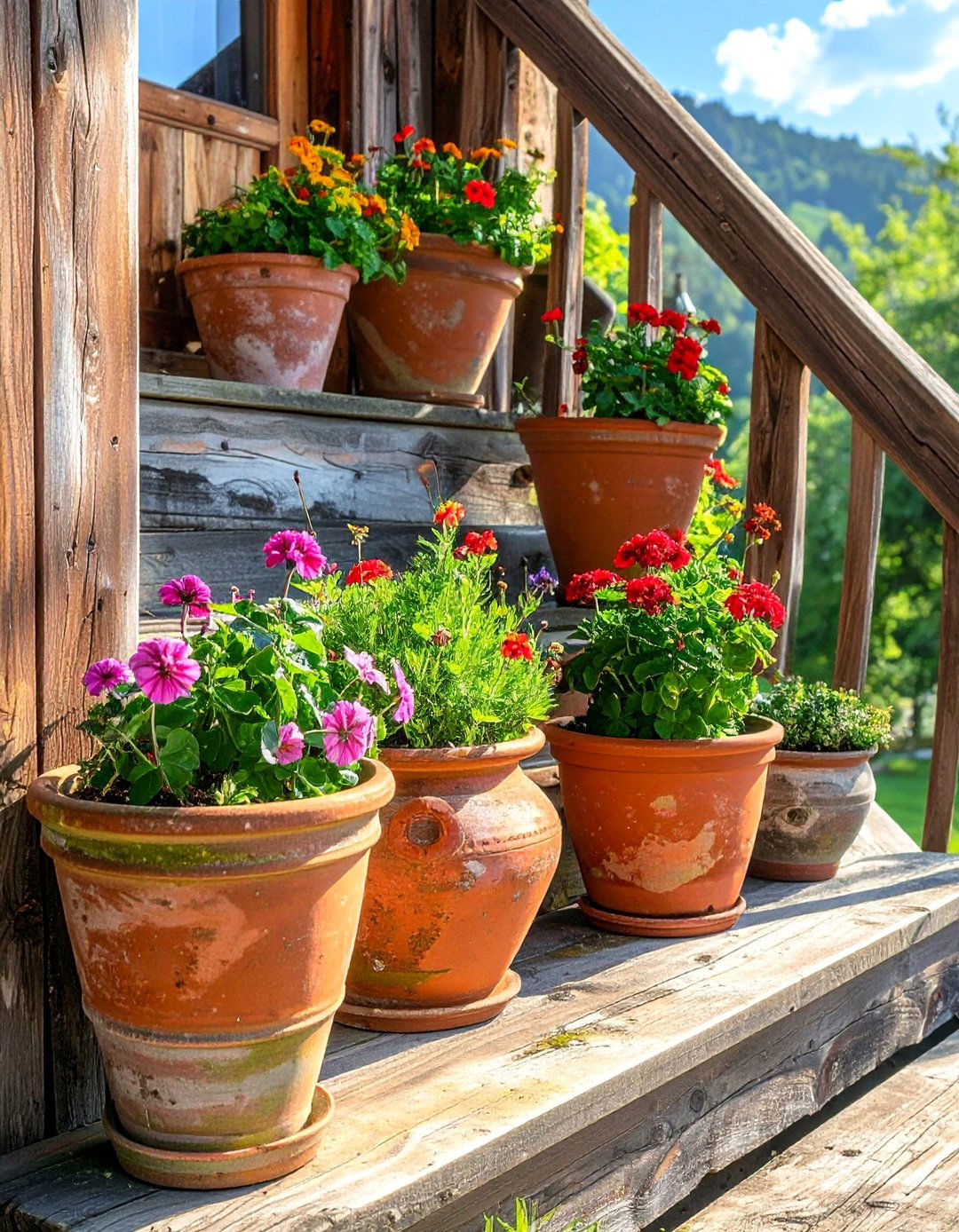
Terracotta and other aged clay pots are essential for achieving a classic farmhouse garden look. Their warm, earthy tones and porous nature make them ideal for a variety of plants, from herbs and annuals to small shrubs. Grouping pots of different sizes and shapes creates a visually appealing display on a porch, patio, or along a pathway. Over time, these pots develop a beautiful, mossy patina that adds to their rustic charm. This weathered look suggests a garden that has been lovingly tended for years, perfectly capturing the timeless and established feel you want to create.
16. Adding a Birdhouse or Bird Bath Feature
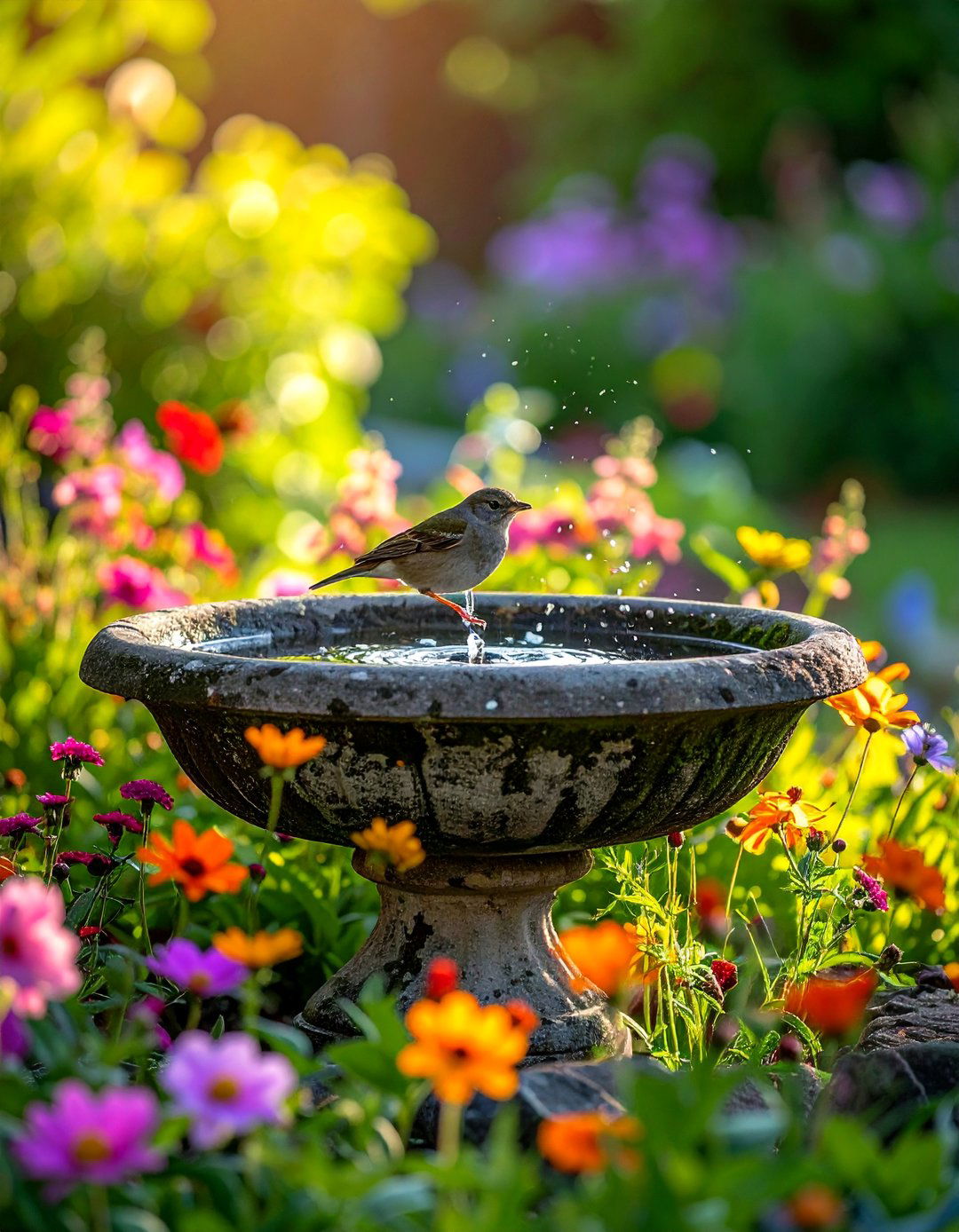
Incorporating a birdhouse or a bird bath brings life, sound, and movement to your farmhouse garden. A rustic wooden birdhouse mounted on a post or a simple stone bird bath provides a welcoming sanctuary for feathered friends. These features not only support local wildlife but also add a charming decorative element. The cheerful chirping of birds adds an auditory layer to the garden experience, enhancing its peaceful, natural ambiance. Choose designs made from natural materials like wood or stone to ensure they blend harmoniously with the rustic setting, making your garden a lively and inviting ecosystem.
17. Planting Climbing Roses on a Trellis
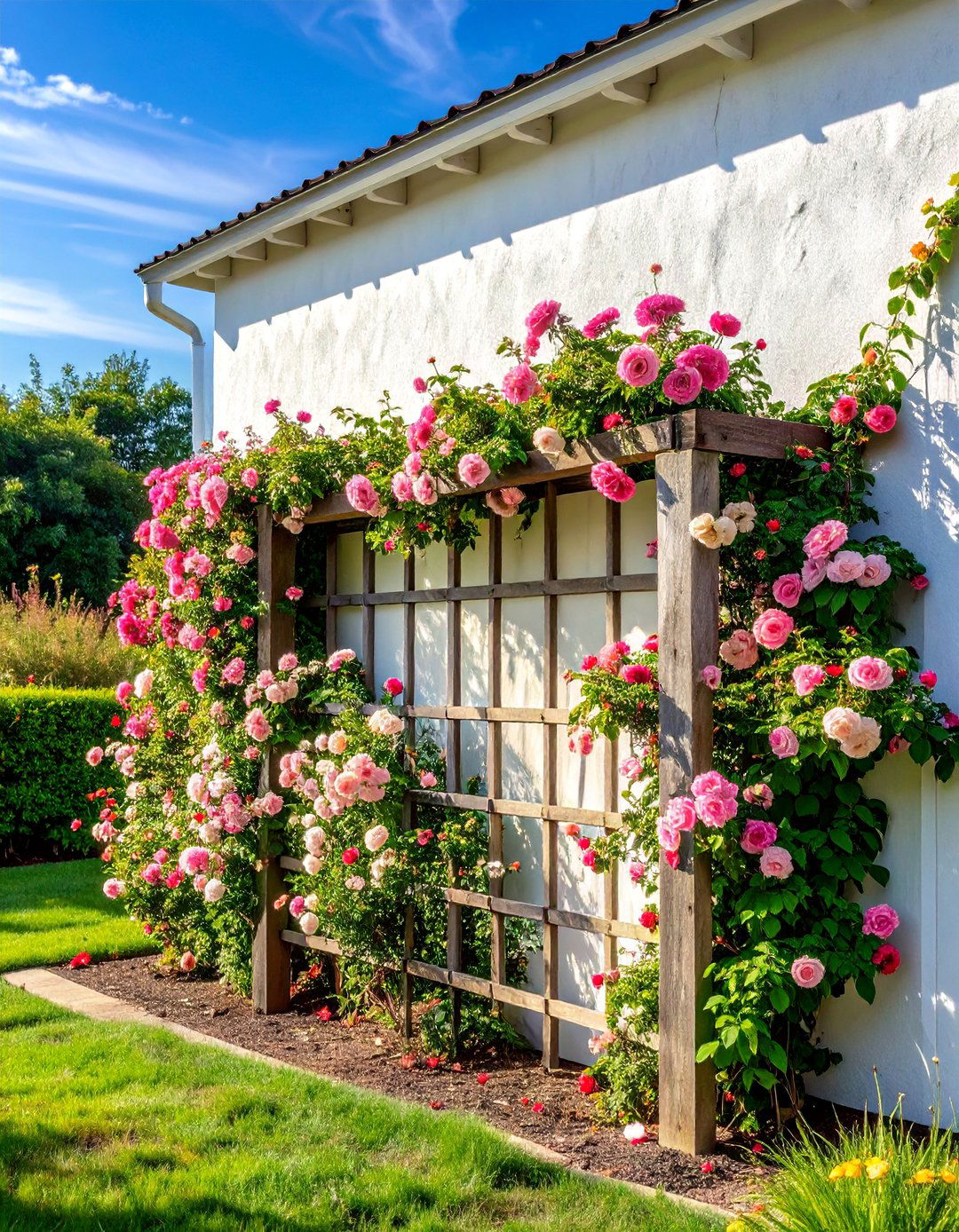
Planting climbing roses and training them up a wooden trellis adds vertical beauty and romantic charm to any farmhouse garden. A trellis placed against a house wall, shed, or fence provides a support structure for these vigorous growers, turning a plain surface into a stunning floral display. Choose classic, fragrant varieties like 'New Dawn' or 'Cécile Brünner' for an old-fashioned look. The combination of weathered wood and abundant, colorful blooms creates a picturesque scene that is quintessentially cottage-style. This vertical element draws the eye upward and makes the garden feel more lush and immersive.
18. Creating a Cozy Outdoor Seating Area
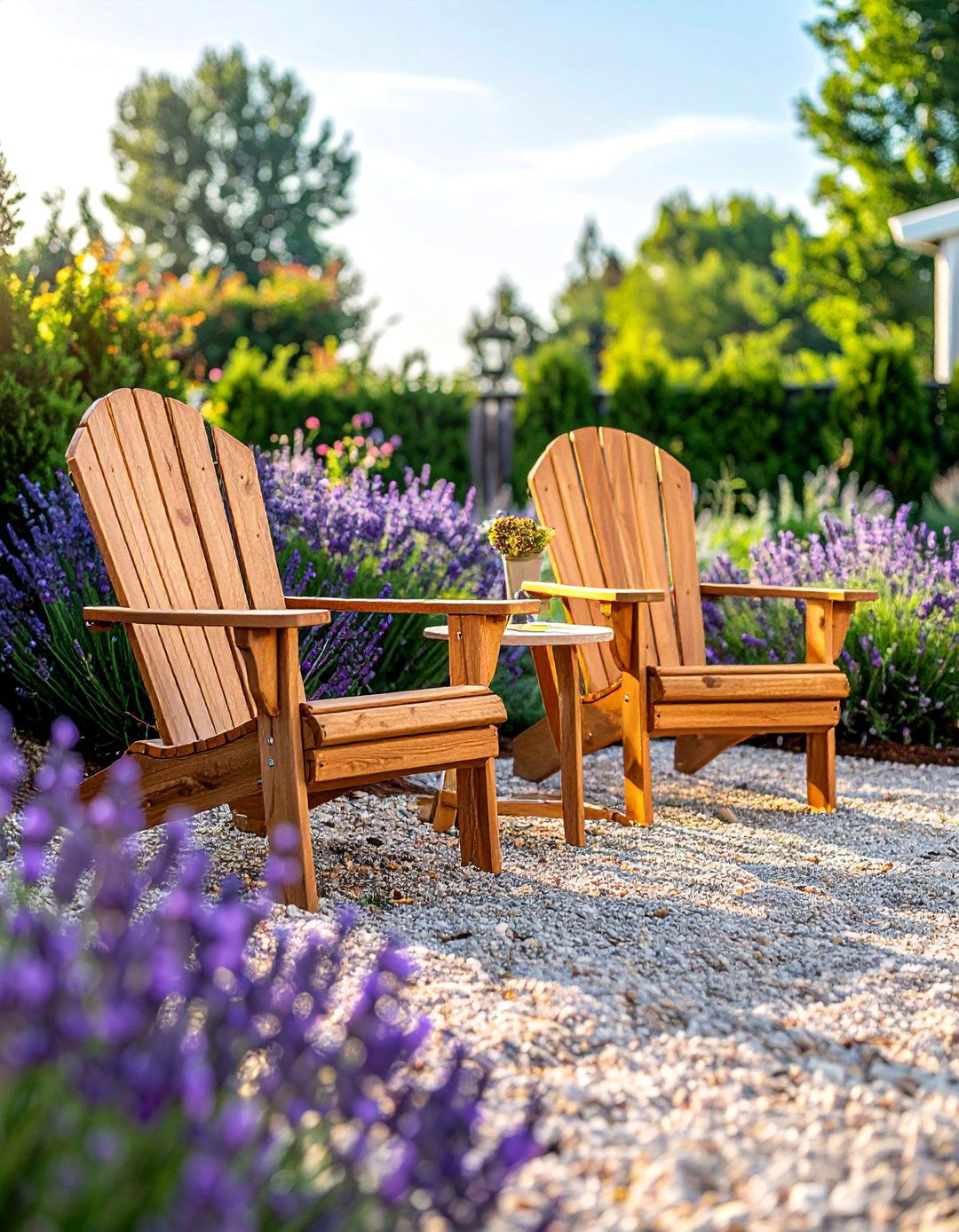
A cozy outdoor seating area transforms your farmhouse garden from a space you work in to one you live in. Arrange a few comfortable chairs, perhaps classic Adirondacks or a rustic wooden set, around a small table or a simple fire pit. This creates an inviting spot for morning coffee, evening conversations, or simply relaxing with a book. Place the seating area on a pea gravel patio or a small patch of lawn with a view of your favorite garden beds. Adding string lights or lanterns can extend its usability into the evening, making it a magical retreat.
19. Utilizing Window Boxes Overflowing with Flowers
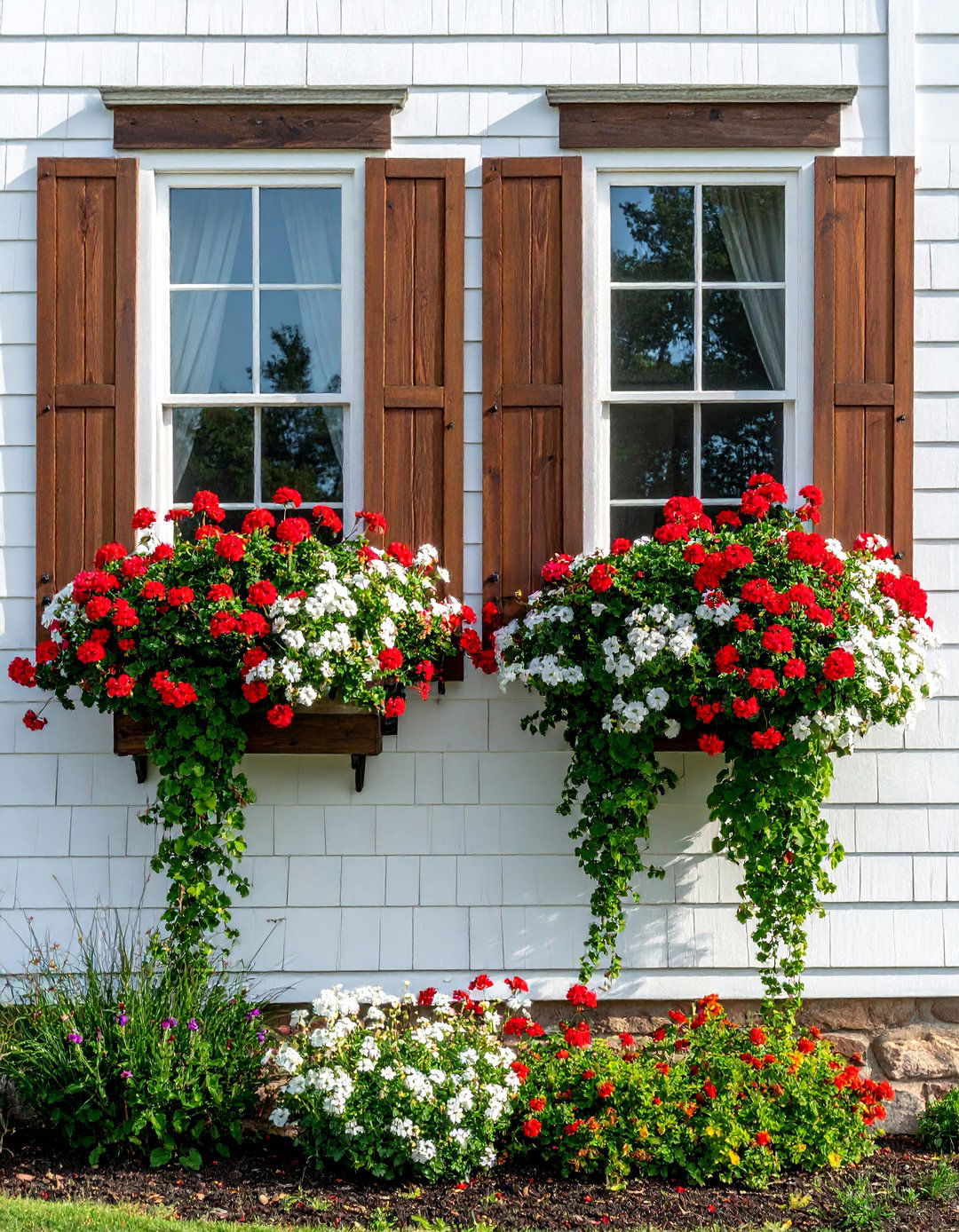
Window boxes are a wonderful way to extend the beauty of your farmhouse garden right up to the house itself. Mounting wooden or galvanized metal boxes beneath your windows and filling them with an abundance of flowers creates a cheerful and welcoming facade. Choose a mix of trailing plants like petunias or ivy, upright growers like geraniums, and filler flowers for a lush, overflowing look. This simple addition softens the architecture of your home and seamlessly integrates it with the surrounding landscape, enhancing curb appeal and reinforcing the charming, plant-centric aesthetic of the farmhouse style.
20. A Farmhouse Garden with Fruit Trees
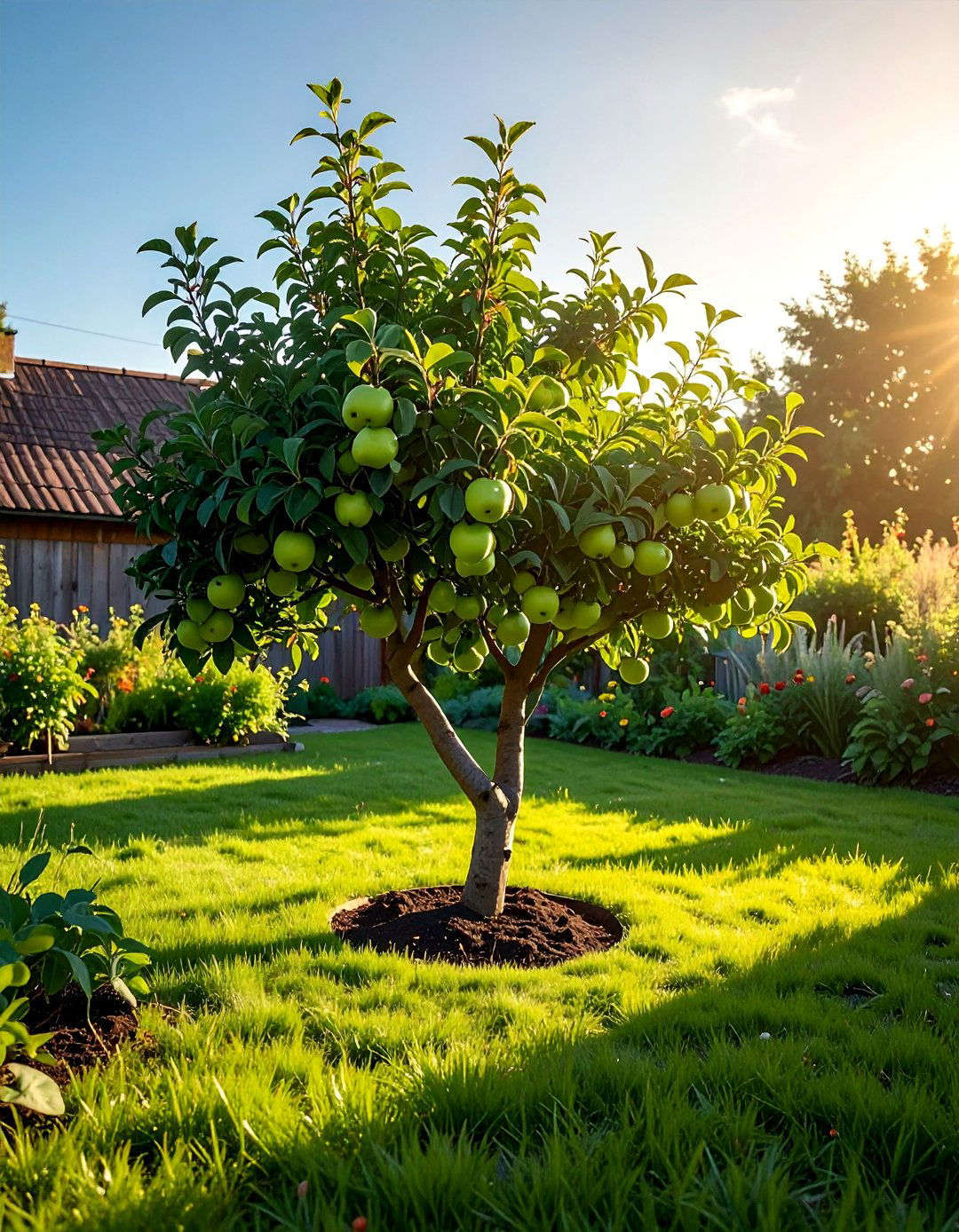
Incorporating fruit trees is a traditional and productive element of any farmhouse garden. Apple, pear, or cherry trees not only provide delicious, homegrown fruit but also add structure and seasonal beauty to the landscape. In spring, they burst into a profusion of beautiful blossoms, while in summer and fall, they bear fruit. Their mature forms create welcome shade and a sense of permanence in the garden. Even a single dwarf fruit tree planted in a large container can contribute to the productive, self-sufficient spirit of a farmhouse. These trees connect the garden to a legacy of cultivation and harvest.
Conclusion:
Creating a farmhouse garden is about celebrating simplicity, functionality, and the beauty of nature. By combining elements like white picket fences, raised wooden beds, and pea gravel paths, you can craft a space that is both productive and picturesque. The key is to use natural materials, embrace imperfection, and blend edible and ornamental plants. Whether you incorporate a rustic potting bench or a cozy seating area, each element should contribute to a welcoming, lived-in atmosphere. Ultimately, a charming farmhouse garden is a personal sanctuary that connects you to the timeless appeal of country living.

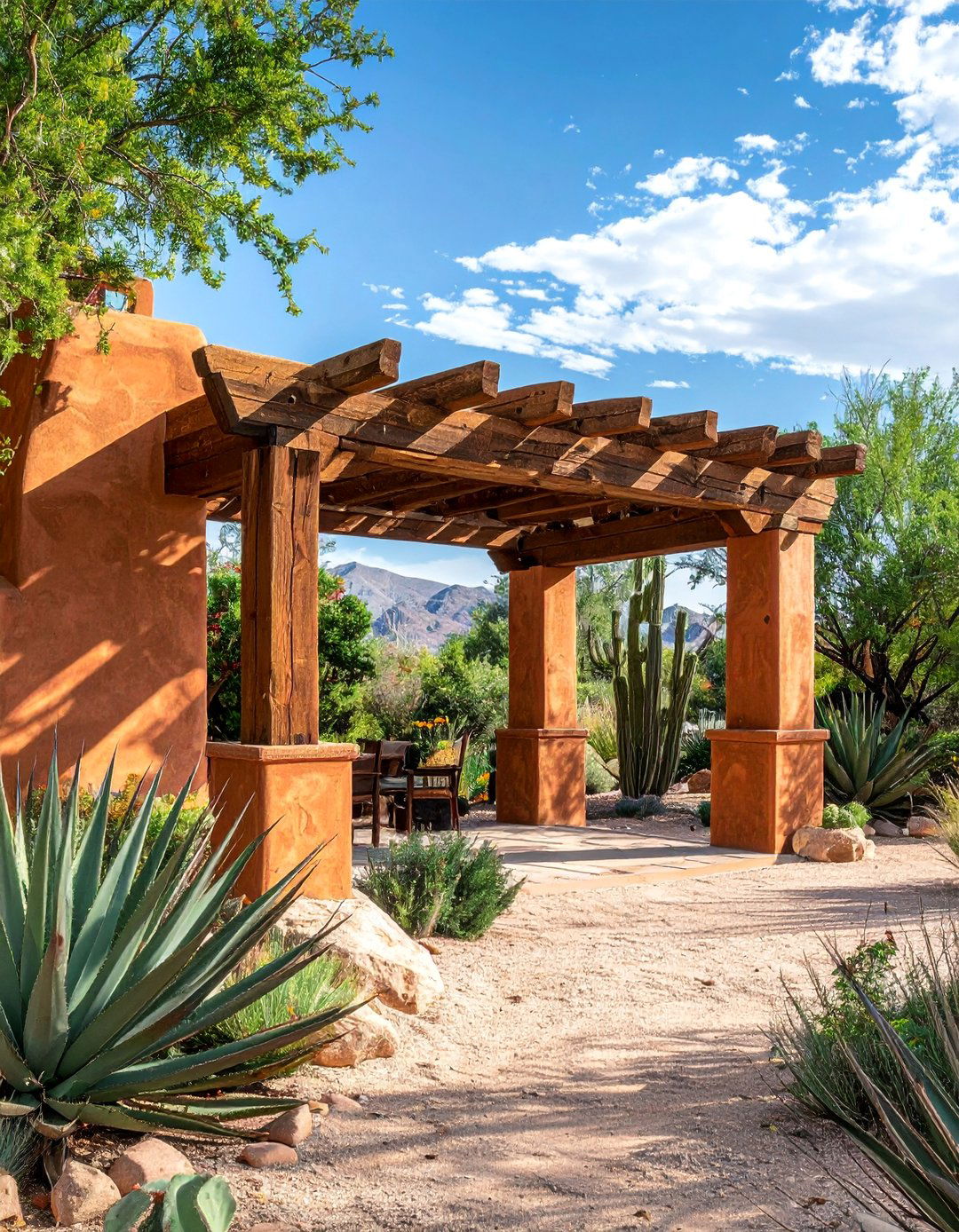
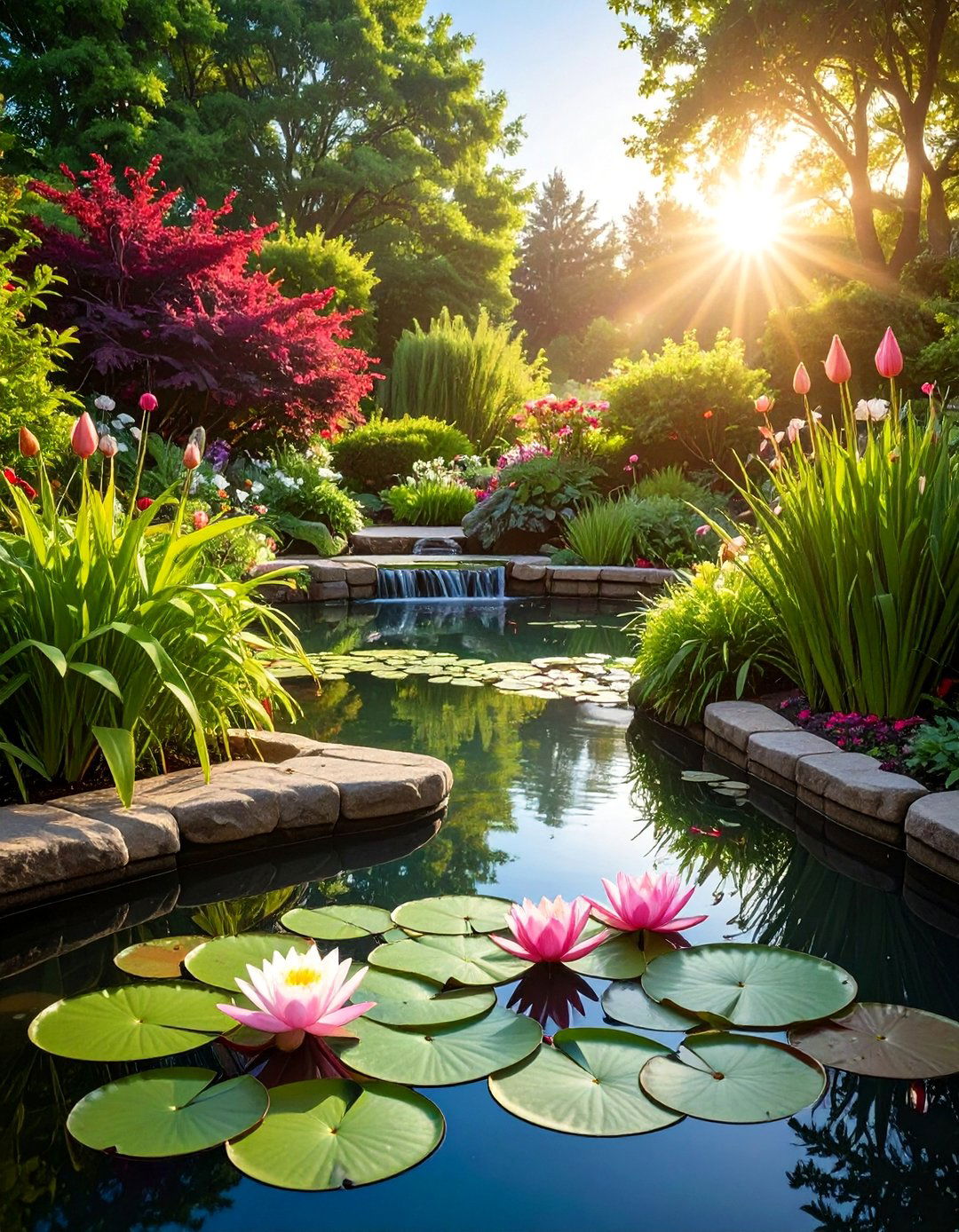
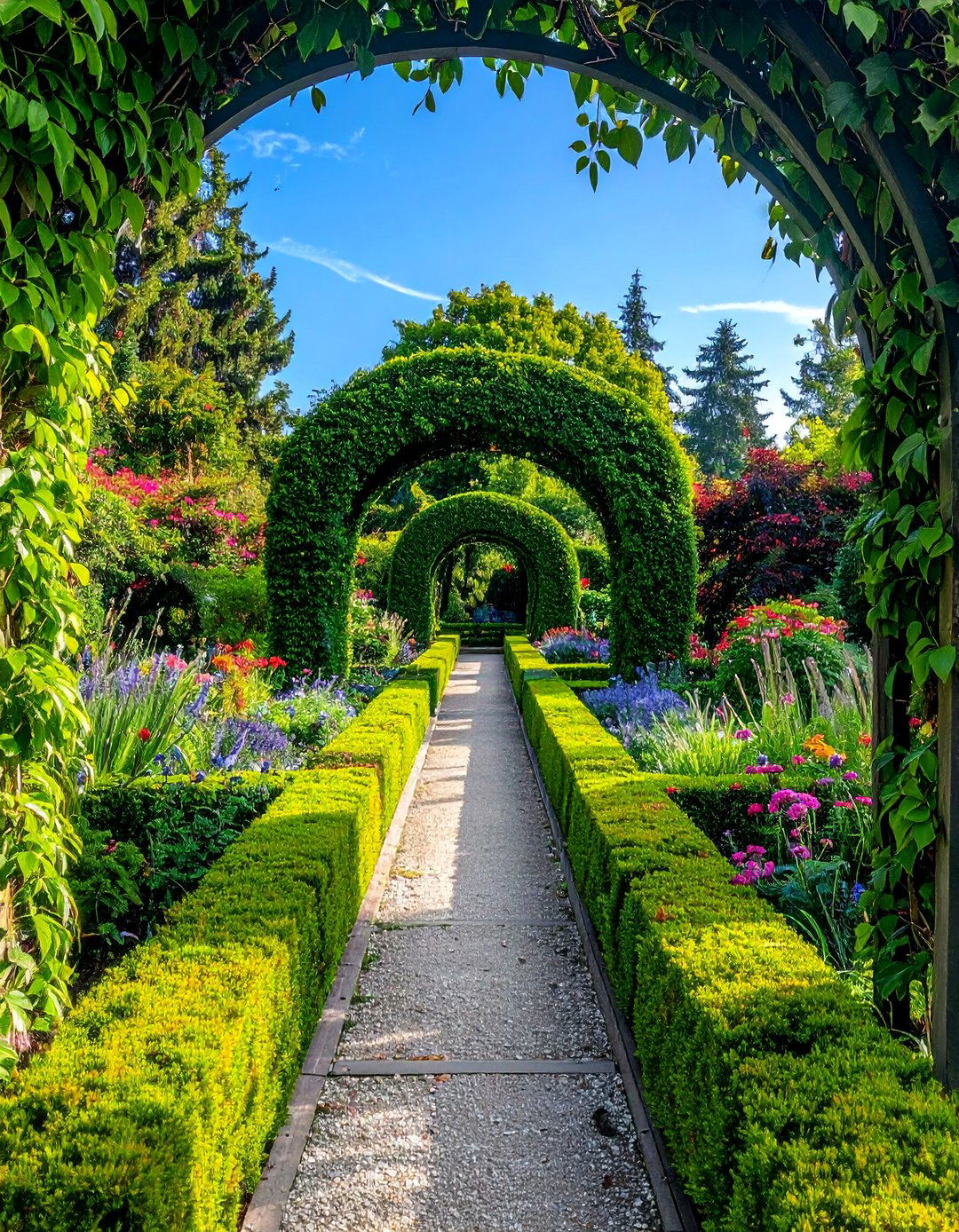
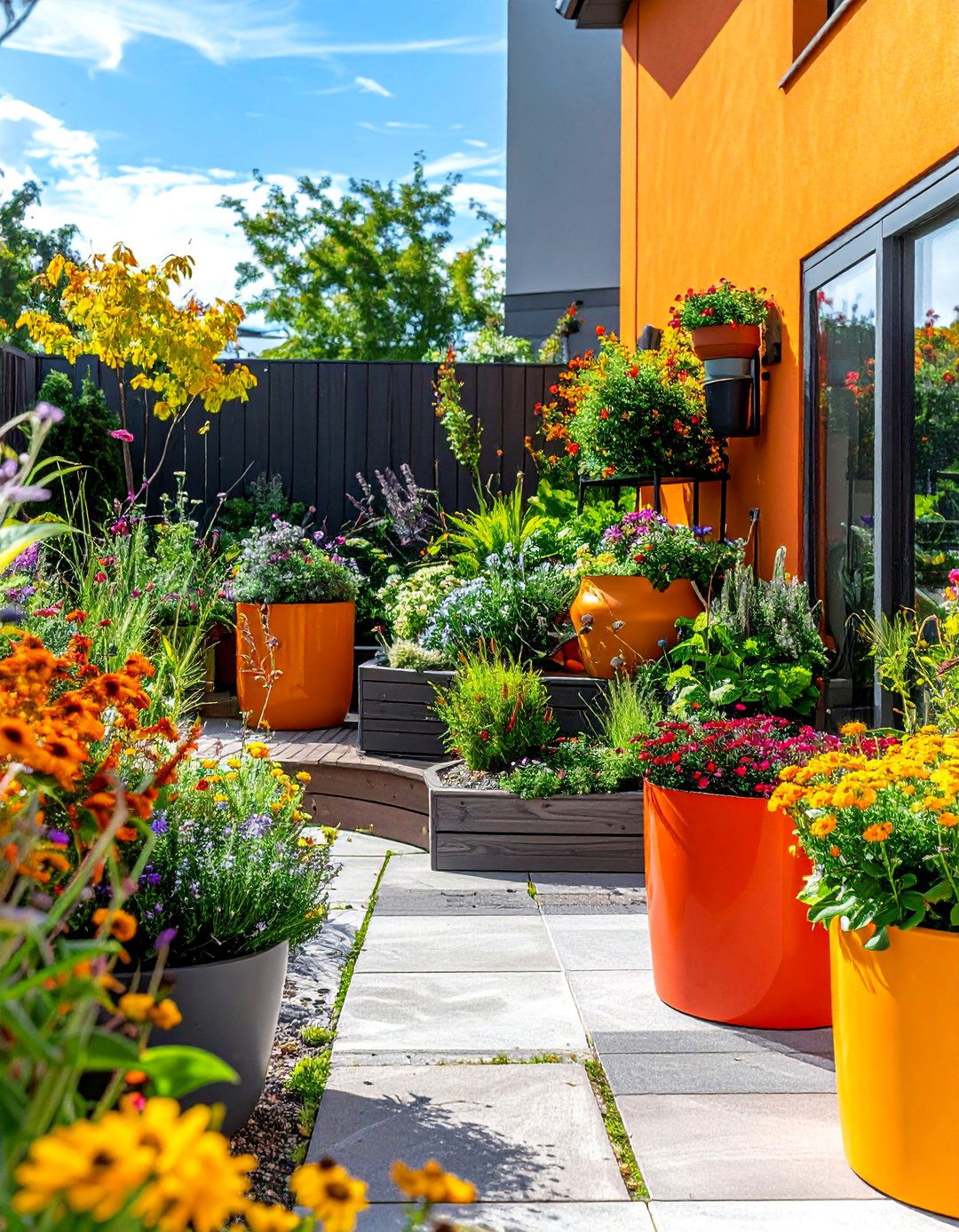
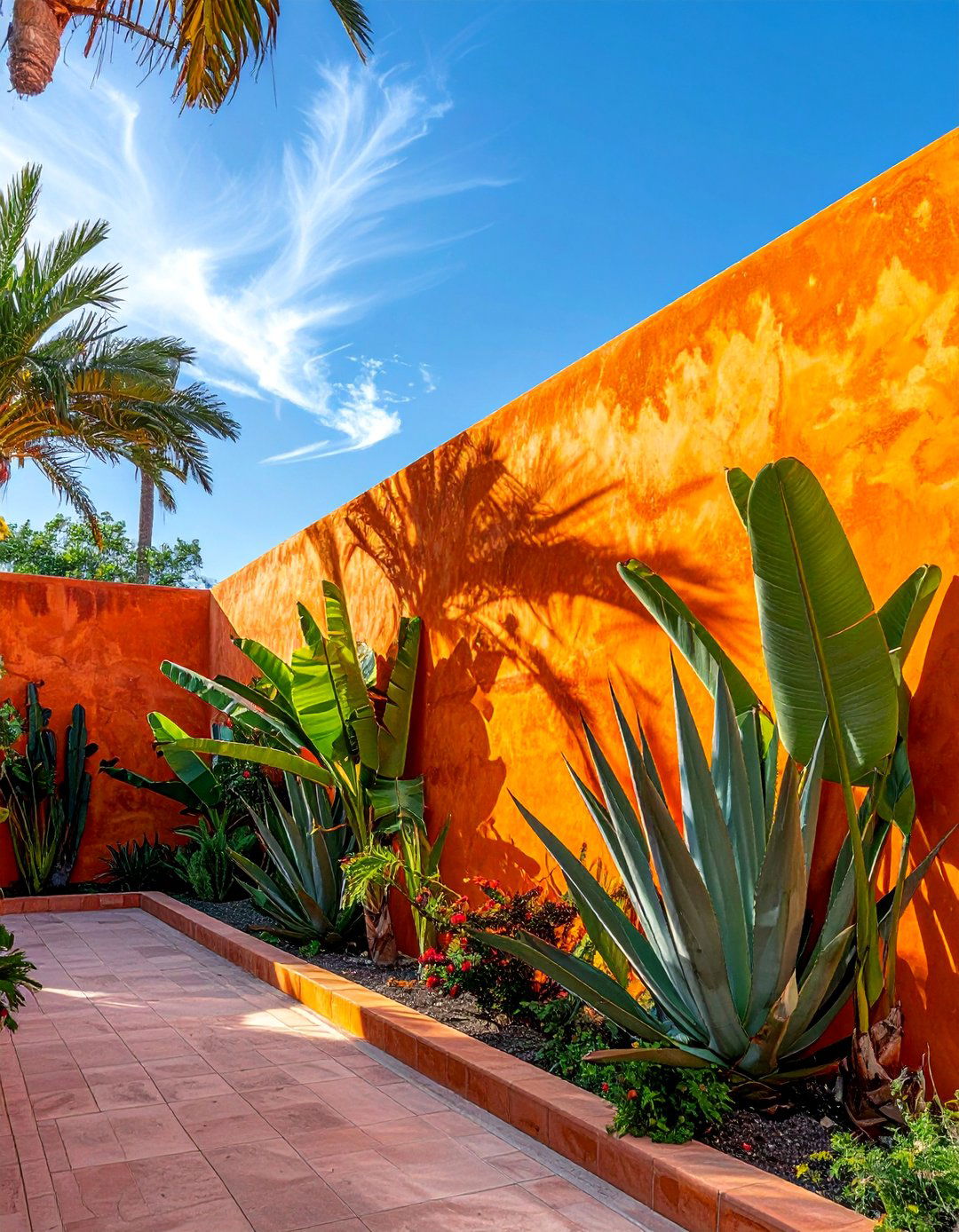
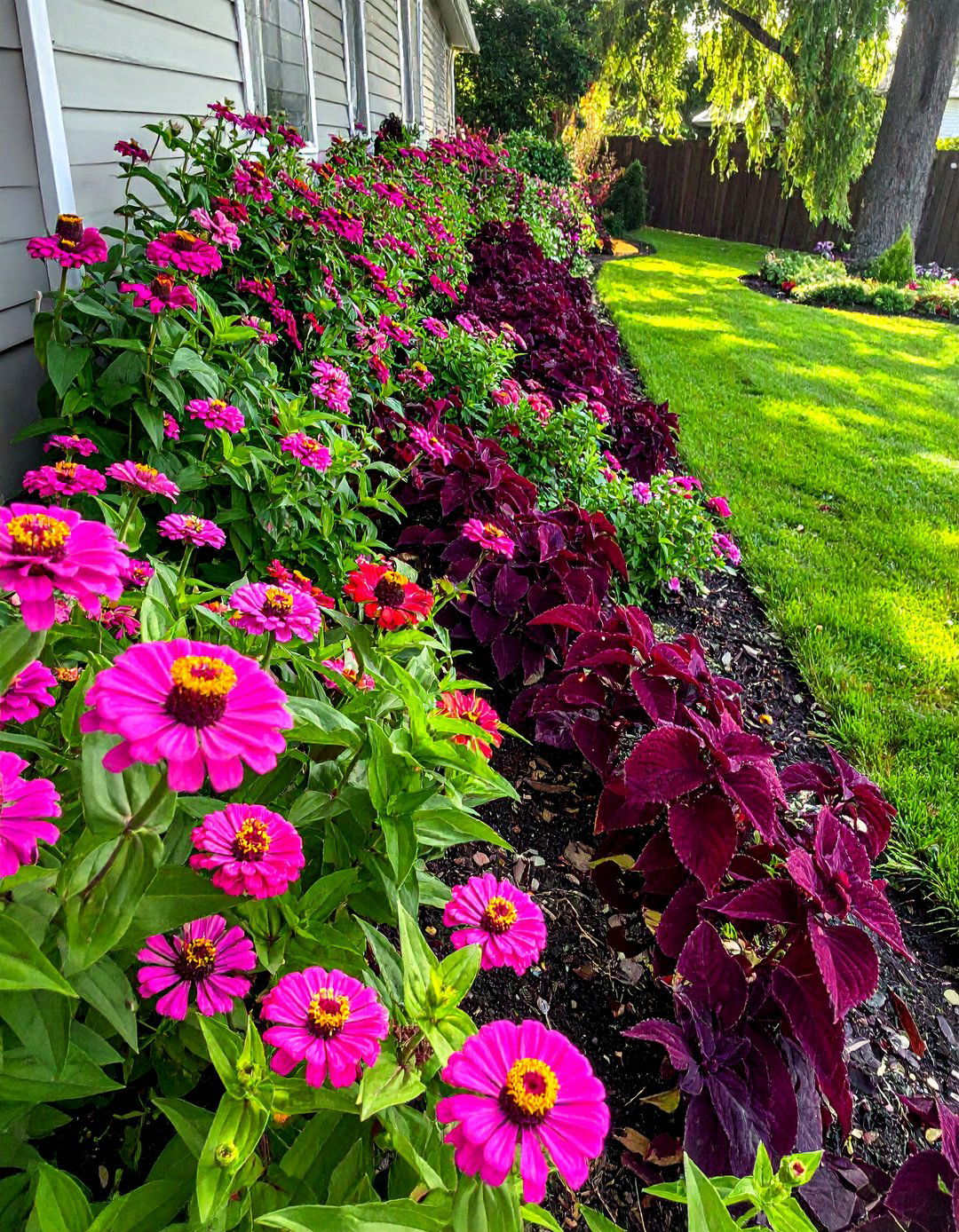
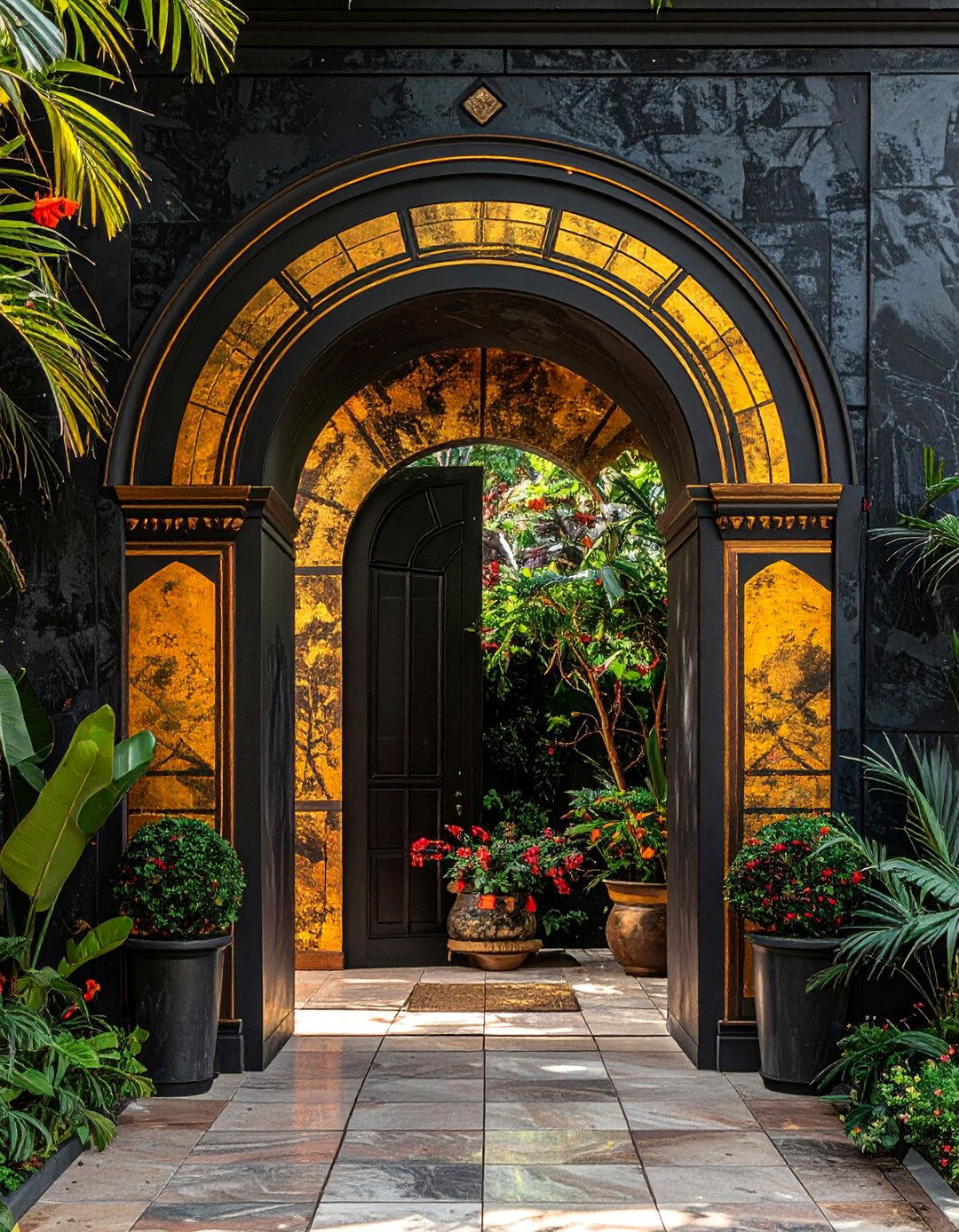
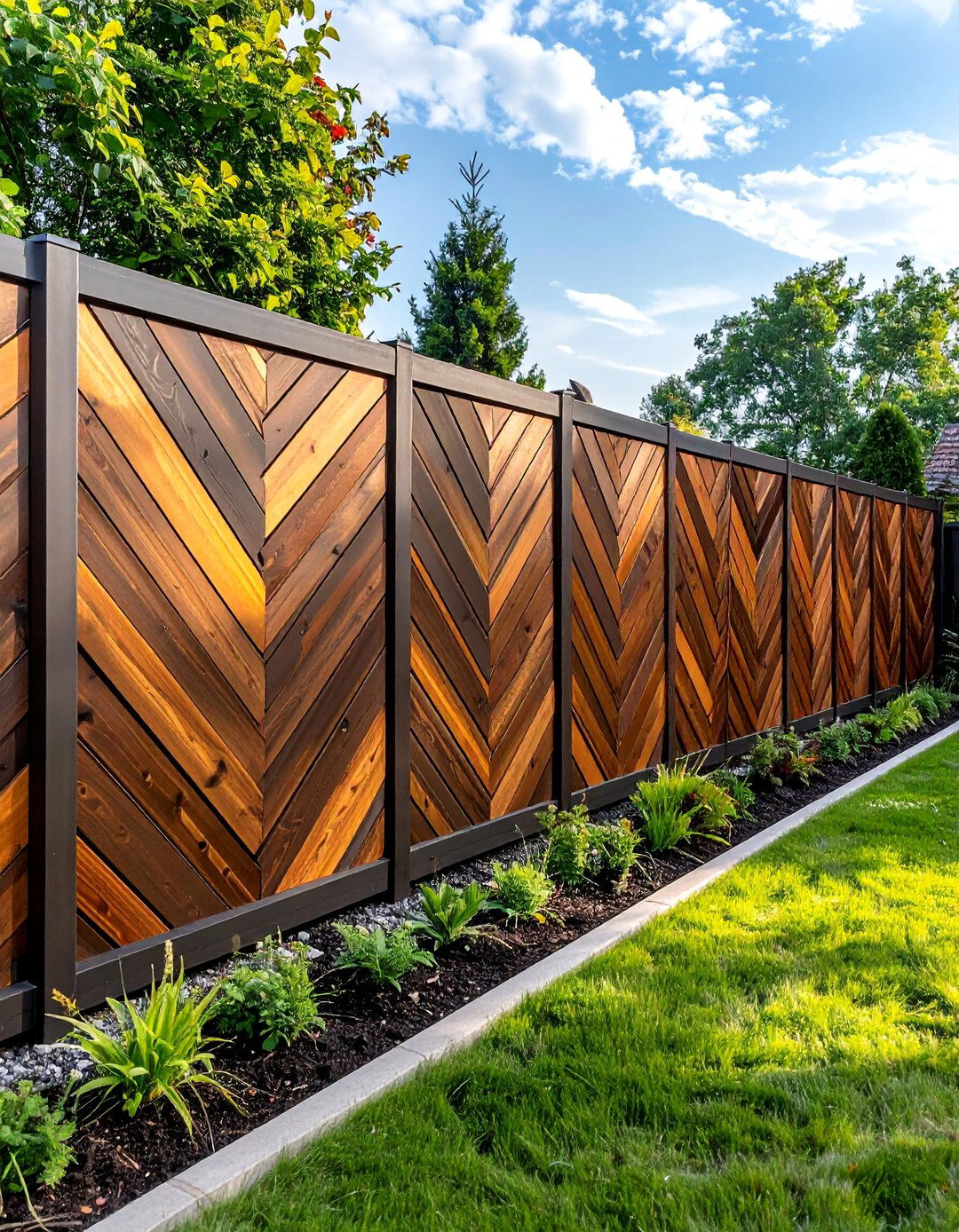
Leave a Reply